

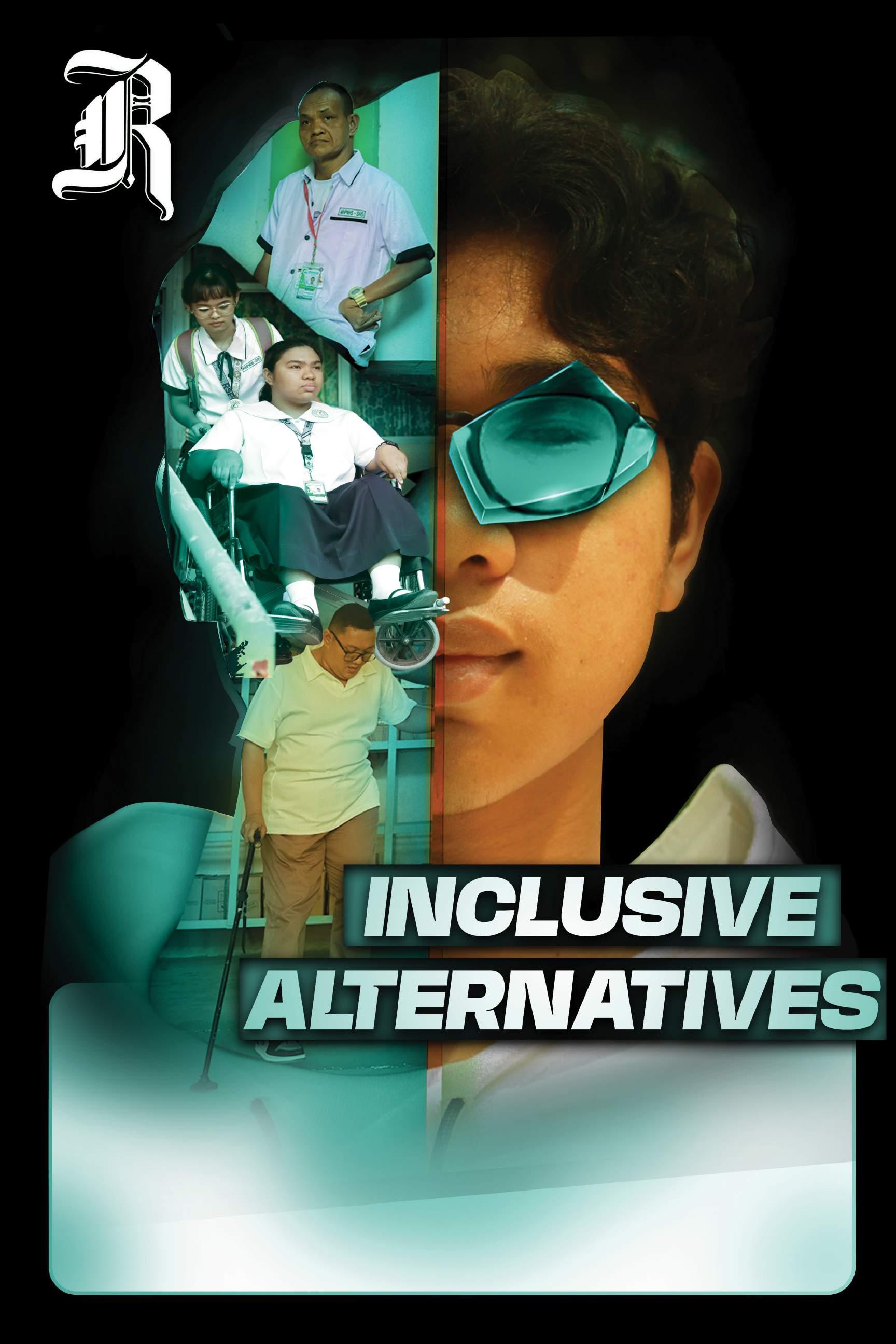

midst the push for inclusive education, hurdles marred the accessibility of the Inclusive Learning Resource Center (ILRC) as several barriers hindered its mission. From financial constraints and shortage of healthcare professionals, the ILRC
struggles to accommodate diverse learning needs, leaving students with disabilities underserved.
Under RA 11650 also known as the Inclusive Education Act of 2022, every school–public or private shall ensure inclusive quality education for every learner with disability.....
THE REPUBLIC The Official Student Publication of Marcelo H. del Pilar National High School VOLUME LXXIV NO. 2 JANUARY - MAY 2024 .
WHAT’S INSIDE LACK OF EQUIPMENT HINDERS TRAINING --SPS TEACHER 04 NEWS TURNING THE CHALKBOARD 05 EDITORIAL PULONG KABYAWAN: A REFLECTION OF YESTERDAY 11 FEATURE DISSECTING DANGERS: A CALL FOR A HEALTHIER FUTURE 15 SCIENCE continueon page 2
SPED CENTERS FILL VOID AMID ILRC ABSENCE A
Cristine Ann Apuntar (12 ABM A)
BREAKING BARRIERS. Gef Caleb Clemente, 16, a PWD who suffers a 1000 eye grade due to a congenital defect and is legally blind and other PWD students and teachers go beyond false impressions to aim for their aspirations. Kyla Lomotan (12 STEM E)
Caitlyn Rose Apuntar (10 SPJ Olivares)
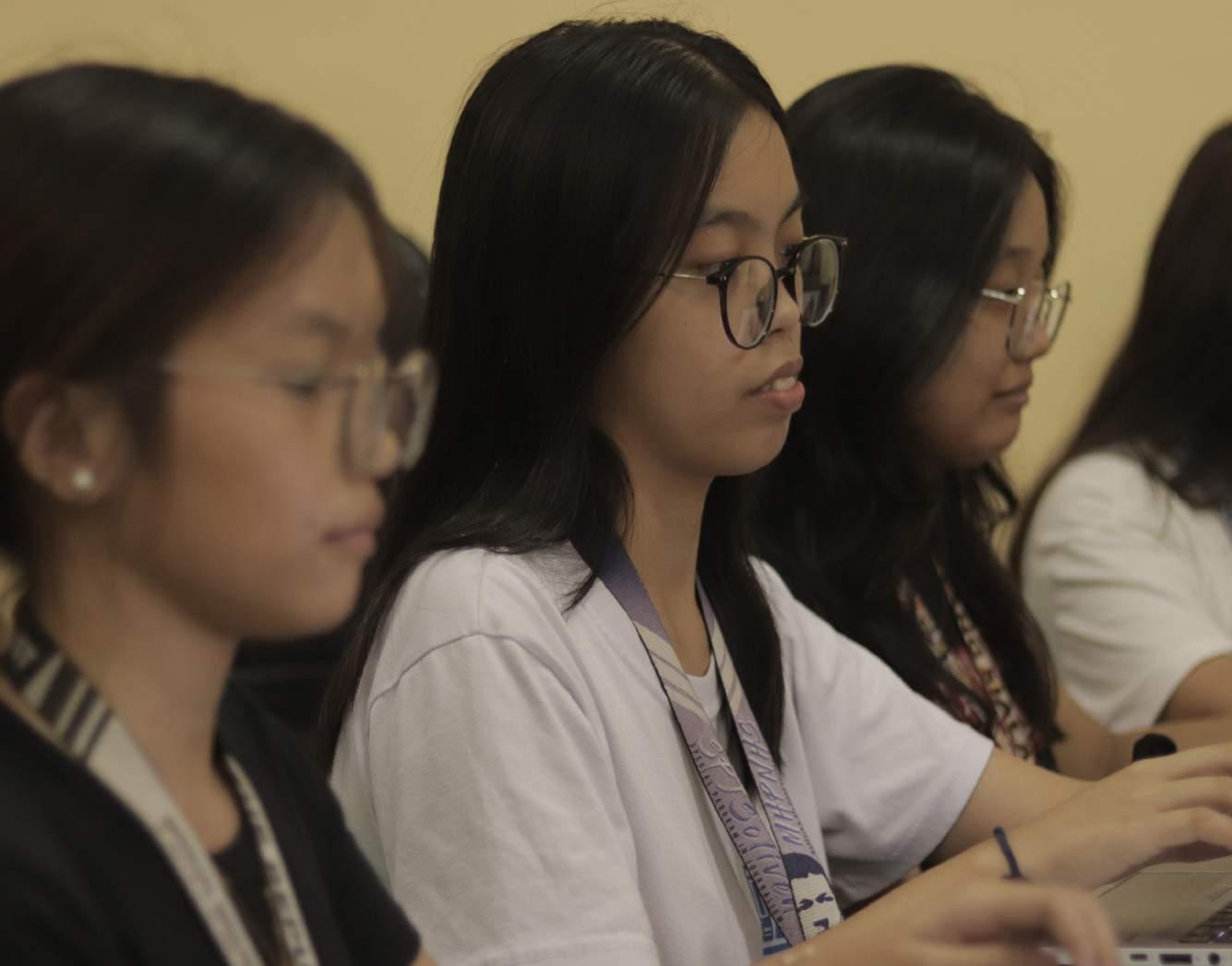



S
SEEN. The rising number of learners wearing eyeglasses in the classrooms raised concern among teachers and parents. Lifestyle and genetics are seen as major contributors.
Deine V. Umali (10 SPJ Olivares)
243
Cristine Ann Apuntar (12 ABM A) Caitlyn Rose Aountar (10 SPJ Olivares)
TOTAL NUMBER OF 20/35 Lowest Eye Grade GRADE 10 STUDENT 20/1300 Highest Eye Grade GRADE 7 STUDENT BY THE NUMBERS
Del Pilarians with Visual Impairment

STE Delpis heat up 2023 TIMO, HKISO

ithin the domain of Mathematics and Science, a group emerges, wielding their knowledge as a sword and perseverance as a gravitydefying shield. These students are a legacy of greatness, driven by brilliance and dedication as they navigate the limitless world.
As torchbearers of excellence, several Delpi Mathematics and Science Olympiads brought pride to the Del Pilarian community by igniting the flames of passion and emerging triumphant in the 2023
Thailand International Mathematical Olympiad (TIMO) and Hong Kong International Science Olympiad (HKISO) -Heat Round.
TIMO 2023
The journey of two Del Pilarians unfolded at the 2023 TIMO, where their mathematical skills soared to new heights. Sophia Agustin from 10 SPSTE Banzon, and Yuan Rey Dela Cruz from 8 SPSTE Quisimbing clinched a Silver Medal, while Deborah Acelajado from 10 SPSTE Banzon earned a Bronze Medal. Agustin, driven by an insatiable passion for mathematics narrates the challenging journey, joining the competition with an indomitable spirit.
HKISO 2023
Securing gold medals in the HKISO competition were Deborah Mosheh Acelajado from 10 SPSTE Banzon, and Majesty Alexandra Justiniano from 9 SPSTE Belardo. Meanwhile, Phylicia Johanne Bautista from 10 SPSTE Banzon, guided by Russel Pueyo, and Dean Jefferson Justiniano from 7 SPSTE Fe Del Mundo, coached by Joshua Rodriguez, both secured bronze medals in the said competition.
Bautista, one of the victors, shared her emotions upon joining the contest, noting the sense of pride to represent Marcelo H. del Pilar National High School internationally.
“I feel grateful for the opportunity
I was given to represent our school and country internationally. More than the sense of pride is the pressure to do well and to achieve an honorable place,” Bautista stated.
With these new victories, another collection of medals is added to the legacy of Del Pilarians, bagging awards nationally and internationally. Their greatness, etched in the archive of achievements, contributes to the continuous development of a thriving academic environment within the hallowed hallways of the school. As they navigate further, new young mathematicians and scientists will rise, fueled by their triumphs, upholding the legacy of diwa, dangal, and dunong.
Obra - MHPNHS Cultivates Cultural Legacy through Puni Workshop

With the goal of upholding the rich cultural heritage of Bulacan when it comes to arts and crafts making, OBRA - MHPNHS of the Arts and Design (AAD) strand facilitates a program entitled PAMANA: Puni Workshop on March 19, spotlighting the traditional art of “Puni”
By this workshop, Grade 11 students from AAD strand were able to learn the steps in weaving and folding the coconut or buri leaves which was the primary material in making the said craft, leading to the creation of various designs and adornments.
Sharing the vision to preserve and promote this cultural legacy, Julianne Oliver Santos, president of Obra - MHPNHS and Nelica Nicole Dionisio, the head of Visual Arts of Obra - MHPNHS shared their expertise in making the Puni art as they served as the guest speakers on the said workshop.
Moreover, this workshop successfully highlighted the commitment of the students and teachers, not only in preserving the art of Puni but also in highlighting the importance of treasures in Bulakenyo artistry.


With their unending commitment to campus journalism, forty-two Del Pilarian winners at the division level are set to advance in Regional Schools Press Conference (RSPC), to be held
journey and showcased responsive and responsible journalism in both individual and group categories, last February 29.
In retrospect to their national level victory last year, “Marcelo H. del Pilar National High School (MHPNHS) is eyeing to bring home a back-to-back win this year,” said Yzadora Salazar, National Schools Press Conference


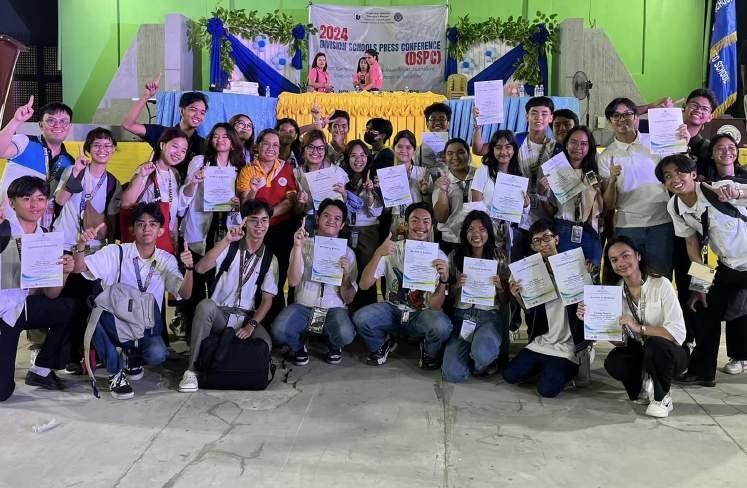
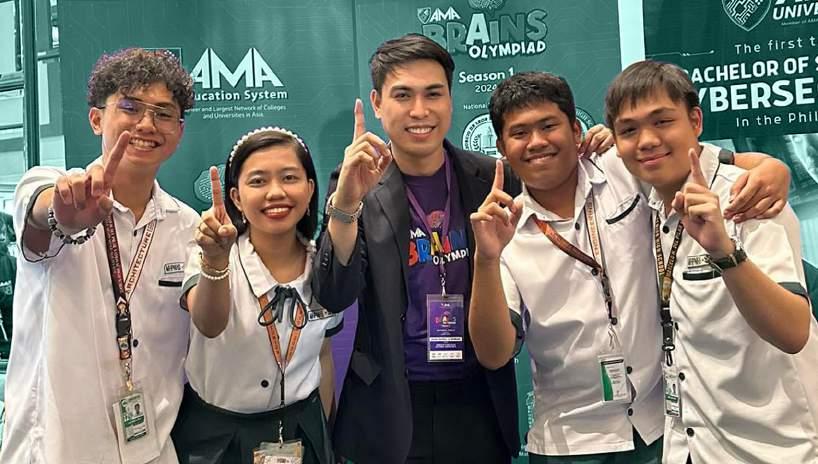
arrying bags filled with intellect and u unwavering dedication, Del Pilarians made history as they were hailed as the Grand Champion in the first ever AMA Brains Olympiad National Finals.
Out of 275 competitive schools nationwide that participated in the event’s prelims, only 11 have managed to unleash their intellectual prowess on the national stage, including MHPNHS delegates Marvhie Binwag, Robin Carpio, Justin

Sarmiento, and Dave Solis, who emerged victorious in the finale round with the guidance of their coach, Engr. Rowell Demdam.
“When [we were] announced [as winners], I couldn’t really believe it the first time I heard it. Up to that point, our mentality wasn’t really to win... we were just there to have fun,” Dave Solis expressed.
But like any other competition, the road to victory was tough for his team as they faced several

setbacks. “For me, one of the biggest challenges we faced was the conflict of our schedules. It haunted us at our first round, and it almost did until the finals. But now, in hindsight, I think that allowed us to always be anticipative of any future setbacks,” Solis added. MHPNHS team aced 30 challenging questions given at the finale, concluding their fight last February 29 at Luxent Hotel, Quezon City – bringing home honor and pride to the Del Pilarian community.
Delpi intellects shine in AMA Brain Olympiad inaugural 42 Delpi scribes to advance in RSPC 2024
SHOWCASING BULAKENYOS’ CRAFT
W C
BLAZING TRIUMPH
JOURNEY CONTINUES BRAIN CLASH AMA-TEURS
JEFFERSON JUSTINIANO
CLAIMING HISTORY. Del Pilarians showcase victory as the grand champion in the first ever
AMA brains olympiad national finals.
DEBORAH ACELAJADO SOPHIA AGUSTIN
MAJESTY JUSTIANO
Cristine Ann Apuntar (12 ABM A) Caitlyn Rose Aountar (10 SPJ Olivares)
Ann Valerie Dayao (10 SPJ Olivares)
Journalists
they
Regional Schools
JOURNEY. 42 Campus
exude pride as
secure slots in the
Press Conference (RSPC)
2024.
Lance V. Tanghal (10 SPJ Olivares)
Summer Ocoma (10 SPJ Olivares)
Hans Pagtalunan
Rowell Demdam


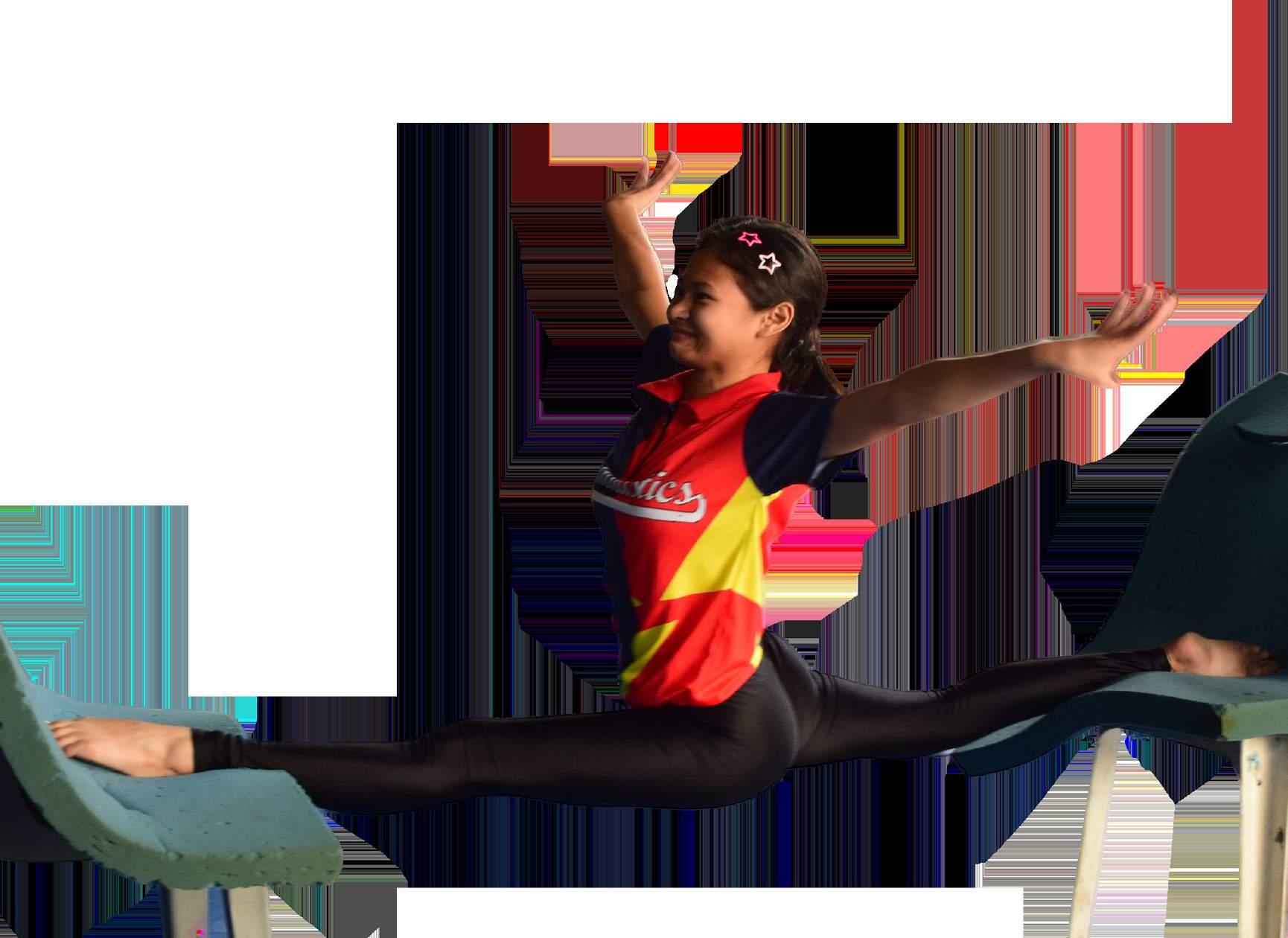
Equipment for training is an indisputable factor for honing and enhancing the skills of students competing in sports.

quipment for training is an indisputable factor for honing and enhancing the skills of the students competing in sports.
With the Athletic Meet fast approaching, Marie Franz Chua, a Special Program in Sports
(SPS) teacher, shared the lack of equipment, hindering the training process of student athletes of Marcelo H. del Pilar National High School (MHPNHS).
To ensure effective training during the time when proper equipment is unavailable,
alternatives such as using vehicle tires for endurance exercises and stacking cushions on chairs for balance and flexibility routines were utilized.
Although the school has an allocated budget for the SPS, it is inadequate to cover all sports
MHPNHS gears up to confront El Nino Challenges

Aiming to reduce the potential health risks among Del Pilarians, teaching, and non-teaching personnel during the El Niño season, Marcelo H. del Pilar National High School (MHPNHS) is set to take proactive measures for the current academic year.
In response to possible challenges posed by El Niño, the school is considering proposals to alleviate
categories as one category necessitates a P250,000 budget to have all the needed equipment for student athletes to utilize.
According to Chua, none of the students can be trained under the male gymnastics category due to the scarcity.
the heat’s impact such as weather monitoring and improving facilities that involve the installation of additional electric fans for classrooms and provision of cool-down areas within the school premises to improve the air circulation.
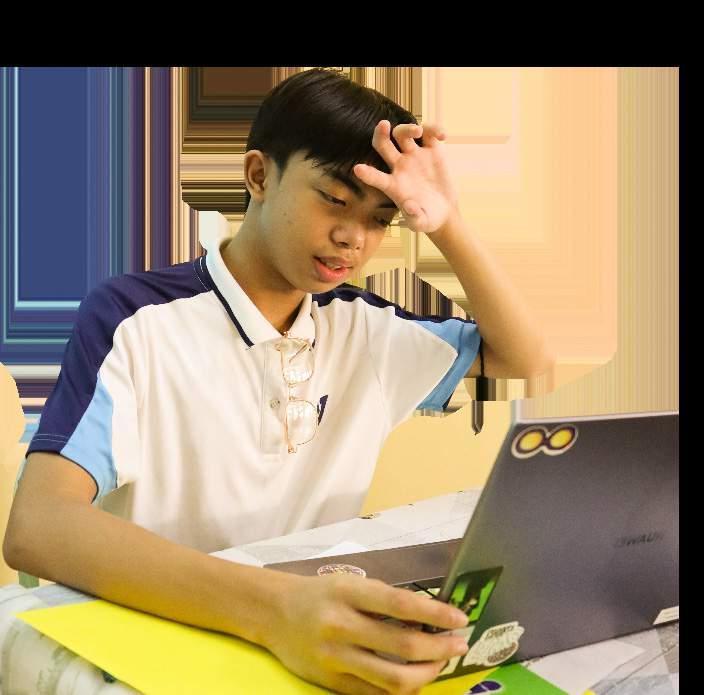

Moreover, various educational campaigns, programs, and training are set to be given to students, teachers, and other staff of the school for them to be ready to respond to any emergencies effectively during the El Niño season. Development of the protocols inside the campus is also planned, this includes: the scheduling of outdoor activities, advising students and staff to stay in cool areas when necessary, and providing immediate medical assistance for heat-related emergencies.
As of this school year, there are only two reported cases of heat-related ailments due to the effects of El Niño, these cases will be closely monitored especially after the holy week when it is expected that the heat index will increase.
Furthermore, Norman Alvarado, MHPNHS’ School Disaster Risk Reduction and Management (SDRRM) Officer added that despite the efforts of the school in preparation to El Niño’s effects. The readiness of the school still depends on various factors, including its capacity to implement safety measures, support from the local government and agencies, and the community’s ability to unite and work together in facing the challenges brought by El Niño.

The Department of Education (DepEd) is said to address concerns regarding the transfer of Administrative Tasks of educators to non-teaching personnel. However, DepEd displays a new problem opposing their plans–staffing shortages.
According to DepEd Order No. 2, s. 2024, issued on January 26, mandates that all administrative tasks currently carried out by teachers will be reassigned, with the aim of relieving them of such tasks within a transition period of 60 days. Nonetheless, its feasibility to unload within the time frame is uncertain.
Raul Reyes, former School Disaster Risk Reduction Management (DRRM) coordinator, emphasized the impact of the removal of the “additional responsibility” on their workload.
“Ngayon, nung natanggal sa’min [admin tasks], in a way, gumaan, kasi after the removal we had more time to focus on the teaching load given by the school…gumaan din ang trabaho namin,” Reyes stated.
However, despite DepEd acknowledging the challenges faced by teachers and the relief experienced by educators after the removal of administrative tasks, the issue of staffing shortages remains. This poses significant obstacles as the tasks cannot be effectively transferred when no one is there to be passed on.
With that, major educators expressed that addressing staffing shortages is imperative to facilitate the smooth transfer of administrative tasks as outlined in the DepEd Order No. 2, s. 2024.
“ DepEd displays staffing shortage amid transfer of teachers’ admin tasks
VICTORY THWARTING OBSTACLE SAFETY IS THE TOP PRIORITY WORKS UNLOADED
E IMPROVISED. Special Program in Sports (SPS) students produce alternatives to train effectively despite the lack of equipment. Summer Ocoma (10 SPJ Olivares)
SCORCHING HEAT. A learner continues classes through distance learning at home despite the increasing heat index in the country. Summer
Ocoma (10 SPJ Olivares)
Carla Joy Carlos (10 SPJ Locsin)
Joyce Bartolome (11 HUMSS F)
Kheiya Celina Mendoza (10 SPJ Locsin)
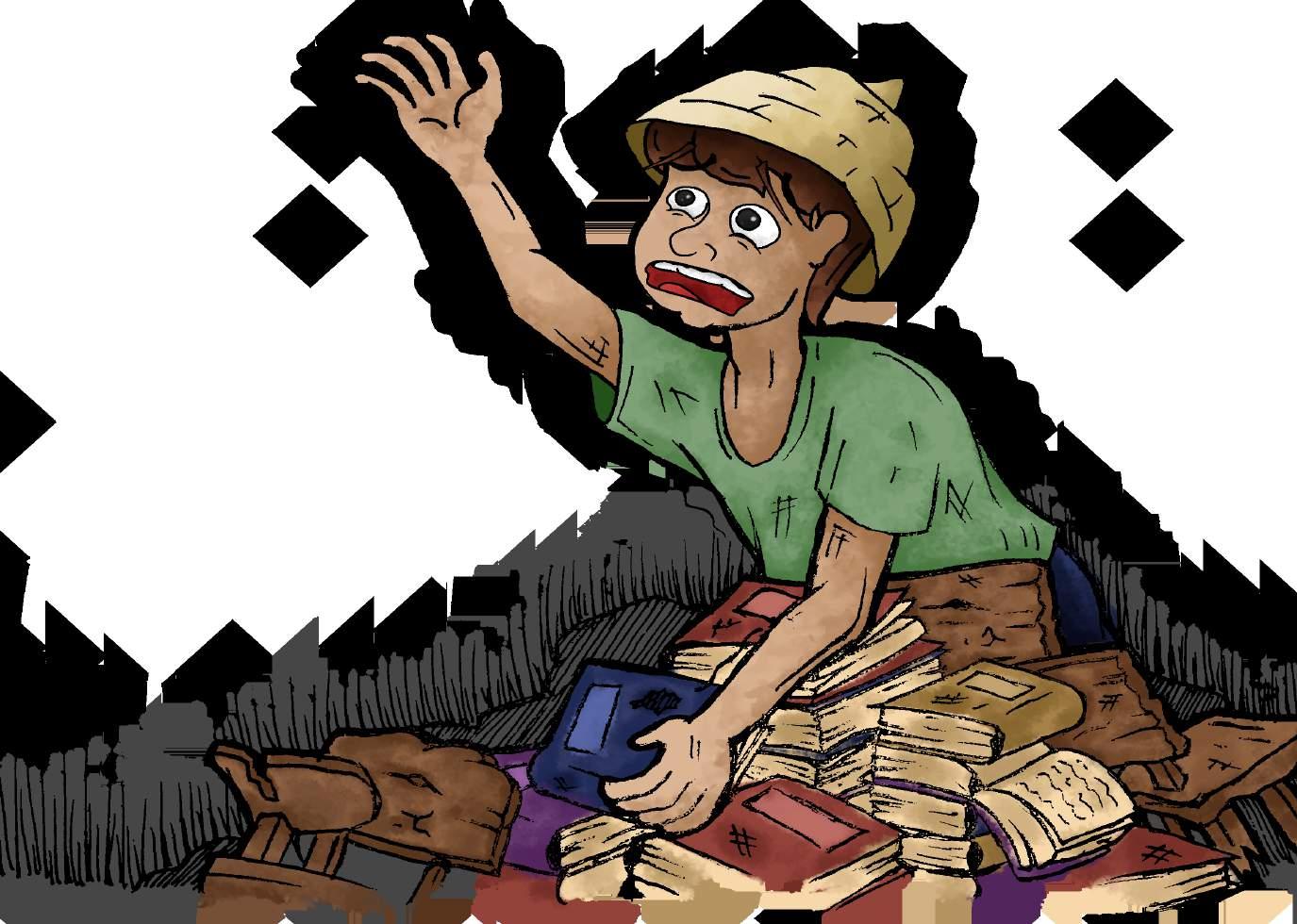
“ As the saying goes, “knowledge is power,” but for far too many Filipino students, this power remains tragically out of reach.
Education stands as the bedrock of societal progress, yet in the Philippines, it remains a tale of missed opportunities and unfulfilled promises. With the release of the EdCom II Year One Report, titled “MISEDUCATION: The Failed System of Philippine Education,” we are once again reminded of the structural weaknesses that hobble our public education system. As the saying goes, “knowledge is power,” but for far too many Filipino students, this power remains tragically out of reach.
As revealed in the EdCom II Year One Report , the above factual reality is simple: despite the success of private schooling, public education falters in securing quality learning

Amidst the controversies surrounding their safety, do the Del Pilarians agree that wearing uniforms should be mandatory and will be helpful to heighten their security or will it be a burden on the students’ pockets?
opportunities for all. According to studies by Drs. Vicente Paqueo and Aniceto Orbeta, Filipino private school students consistently outperform their public school counterparts, highlighting a troubling performance gap that continues to widen. In the PISA 2022 Survey, this disparity was evident, underscoring the urgent need for systemic reform to address the root causes of educational inequity.
TEXT BOOKS
Despite generous budget allocations, public schools languish in neglect, with a mere 27 textbooks procured for Grades 1 to 10 since 2012. Shockingly, from 2018 to 2022, a paltry 7.5% of the allotted P12.6 billion for textbooks and instructional materials found its way into dissemination. This egregious mismanagement perpetuates a vicious cycle of educational privation, depriving millions of students access to indispensable learning resources.
CLASSROOM MAINTENANCE AND SHORTAGES
Directing our attention to the state of our classrooms, the EdCom Report paints a grim tableau of disregard and dilapidation. VicePresident and Education Department Secretary Sara Duterte’s Basic Education Report 2023 unfurls a startling diversity: a mere 32% of school buildings nationwide boast good condition. Coupled with a shortage of 159,000 classrooms, this crisis thrusts our students into overcrowded, decrepit settings, a mockery to the sanctity of learning.
POOR TEACHER PERFORMANCE
The gulf between public and private school educators in the Philippines is glaring, marked by stark figures and undeniable realities. While private counterparts commence with monthly salaries ranging from P14,000 to P23,000, their public peers earn slightly more, commencing at P27,000. However, despite this financial edge, public educators confront insurmountable hurdles. In 2023, only 35% of public school
“I do not agree that uniforms should be mandatory because not everyone could afford multiple sets of uniforms. The admin’s assumptions that everyone could afford it invalidates students’ burdens.”
- Emmanuel San Diego Jr. (9 SPJF Rodrigo)
students had textbook access, with classrooms grappling with a substantial deficit.
The issues highlighted in the EdCom II Year One Report expose the deep-seated problems plaguing Filipino education, contributing directly to widespread miseducation. Inadequate textbooks and infrastructure, coupled with disparities in teacher quality and resources, create a system where access to quality education is determined by privilege rather than merit.
In response to the challenges outlined in the EdCom II Year One Report, a multifaceted approach is needed to address systemic deficiencies within Philippine public education. This entails implementing a voucher-based system for textbook procurement to increase flexibility and choice, investing in infrastructure to alleviate classroom shortages and improve facilities, and prioritizing teacher welfare and professional development initiatives to foster a supportive environment. Only by addressing these root causes can break the cycle of miseducation and provide every Filipino child with the opportunity to succeed.
While the EdCom II Year One Report sheds light on the formidable challenges plaguing Philippine public education, it also underscores the urgent need for decisive action and systemic reform. Despite the obstacles ahead, Philippine education may have received an F, but it is not a lost cause. By embracing bold initiatives that prioritize equity, innovation, and collaboration, we can chart a course towards a brighter future for generations to come. It is imperative that policymakers, educators, and stakeholders alike join forces to enact meaningful change and ensure that every Filipino child has access to quality education, regardless of socioeconomic status or background. The Filipino youth deserve nothing less than the keys to a boundless future through education, but it’s our duty to ensure they receive the keys to unlock every door of opportunity.
“The Supreme Secondary Learner Government (SSLG) launched a project this school year inviting graduating students to donate their preloved uniforms to incoming students. In this way, students will be able to adorn the proper attire of uniform without worrying about affordability.”
- Jason Cowan (10 SPJ Olivares)
“I agree that security is important but so does practicality. Instead of setting it as a requirement, we must understand that their families must have other priorities in this era loaded with inflation.”
- Lance Irish Balaguis (11 HUMSS F)
“Uniforms should be mandatory to ensure that only students, faculty members, and maintenance personnels are allowed entry within the campus. This is in order to verify that the facilities and equipment of the school is safely kept and secured, as outsiders will be denied entry.”
- Princess Rhain Pongase (11 STEM K)
View Points Editors-in-Chief Jesua Monce Salamat Yzadora Gabrielle Salazar Associate Editors Sofia Lhei Cruz Carmen Ingrid Dumlao Managing Editors Cristine Ann Apuntar Caitlyn Apuntar News Editors Joyce Bartolome Carla Carlos Feature Editors Shyllie De Dios Nina Koleen Cos Opinion Editors John Benedict Sampana Marion Eliza Yabut Science Editors Kurt Maximilian Lopez Marcus Sebastienne Nubla Sports Editor Johann Ayrriel Caceres Chief Photojournalists Ky Lomotan Princess Jervie San Jose Chief Cartoonists Cyrill Angelique Eugenio Luis Miguel Antonio Paday Chief Layout Artists Romar Almoguez Johanne Bautista Contributors Deine Umali Ann Valerie Dayao Kheiya Mendoza Lyan Angela Agustin Ana Mariel Avendano Ryza Mae Angeles Yzabel Louisse Salazar Mikaela Dela Cruz Chloe Bautista Princess Ai Gabriel Jayden Del Rosario Jan Lourene Dela Cruz Sophia Agustin Georgia Centeno Benjamin Jairo Nubla Karl Kevin Buenaventura Nicolette Timoteo Light Jiezl Reyes Dominic Pascual Anika Cruz Ianne Dalupang Allaine Dela Cruz Yzza Dela Cruz Eishia Quiambao Lance Bernard Tanghal Summer Ocoma Ethan Ross Lagura Edrich Bautista Adviser Ma. Isabel B. Cruz Purificacion D. Paguiligan Head Teacher VI English Department Ma. Victoria C. Vivo EdD, CESE Principal IV, MHPNHS THE OFFICIAL STUDENT PUBLICATION OF MARCELO H. DEL PILAR NATIONAL HIGH SCHOOL EDITORIAL STAFF S.Y. 2023-2024 SECTION EDITORS
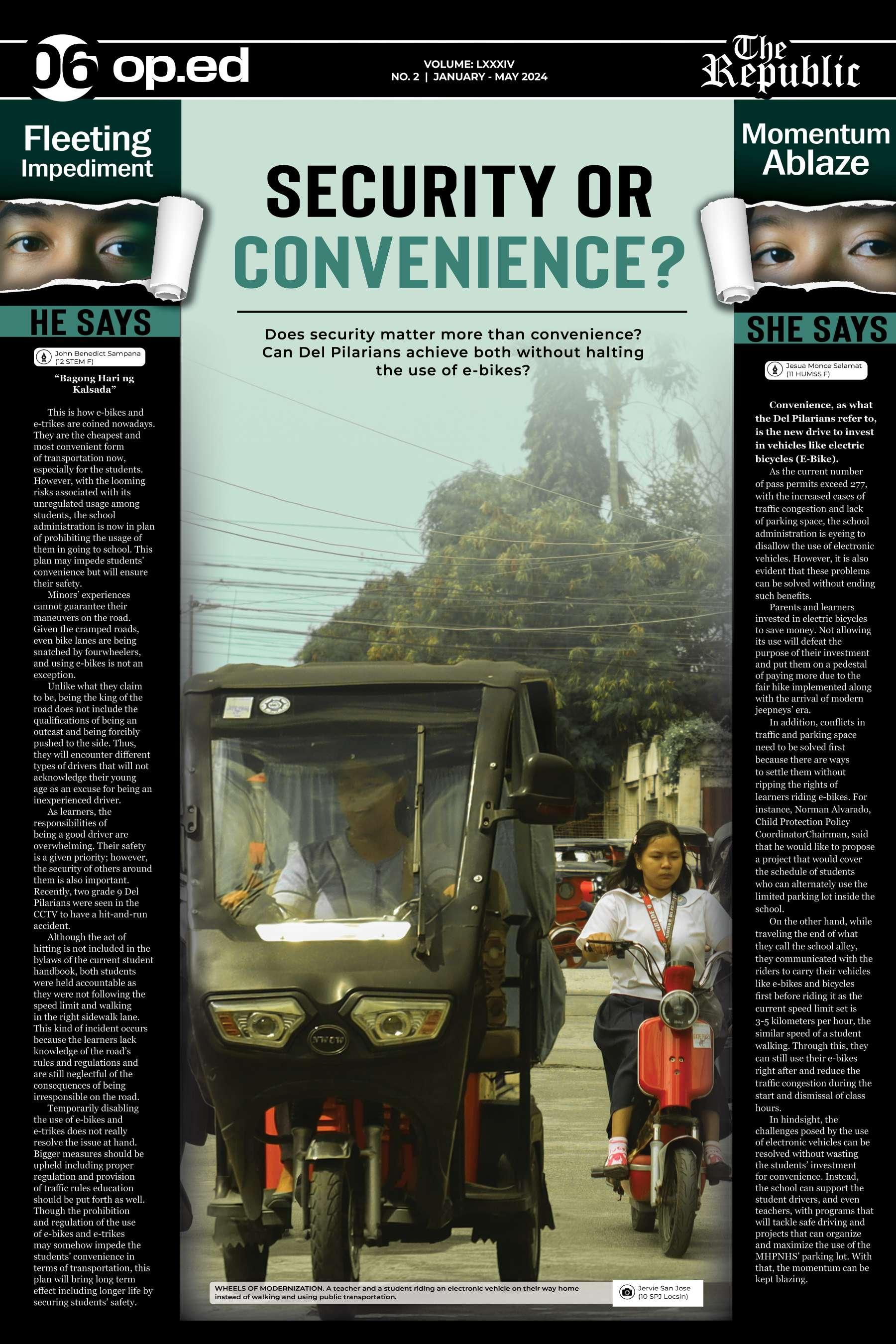

COMMIT OR QUIT

of supporting research, and the fact that it was initiated by an education secretary with no educational expertise.

It’s a delicate balance between aspiration and reality.--As Sara Duterte was appointed as the Secretary of the Department of Education (DepEd), hopes were high for a new perspective in fixing the country’s education crisis. However, as her tenure unfolds, it becomes clear that aspiration alone cannot transcend the gap of educational injustice. It requires more than political clout; thus, it demands a visionary leader equipped with full awareness of multiple difficulties plaguing our education system. VP Sara cannot seem to do anything right, and at this point, there’s no room for guessworking in handling DepEd.
As head of DepEd, she issued an order to clean classroom walls of all items, including visual learning aids, just as schools were about to reopen last August. The issue arose as a result of a lack of prior consultations with teachers and students, an absence

Amplifying Actions

“It is important to note that strengthening combative actions on reproductive health issues is essential and of utmost vitality.


The acquisition of pricey laptops raises concerns about the responsible use of public funds, given that distance learning requires access to digital resources. Along with suspicions of impropriety and favoritism, Duterte is being slammed for the procurement process’s lack of monitoring and openness to the public.
Furthermore, Duterte’s utilization of confidential funds within DepEd has raised eyebrows and prompted calls for greater transparency and accountability.
In December 2022, she utilized a substantial amount of P125 million from confidential funds within a span of just 11 days.
“The misuse of confidential funds not only undermines public trust in government institutions but also has serious consequences for delivering high-quality education.
system. The directive to clean classroom walls was intended to ensure safety during the school’s reopening, whereas the expensive laptop procurement responded to critical demands for remote learning. Although Duterte’s use of confidential funds is questionable, it could have been a reaction to pressing educational concerns.
Despite these hurdles, there is still hope for Sara Duterte to bridge the gaps in her leadership and lead DepEd toward meaningful reform. Duterte must recognize these gaps and take decisive action as she continues to manage the responsibilities of her position. This involves a shift from aspirational rhetoric to concrete action; it also requires a knowledge that real change is a road fraught with problems that must be faced directly with bravery, humility, and an unwavering passion for serving quality education to Filipino students.
Dear Jayden,
Dear Editor,
The Republic, Marcelo H. del Pilar National High School’s Official English Publication, recently collected P90.00 as the pre-payment for the school newspaper. I am aware that Del Pilarians should be the first to support our own craft; however, I recall that there is an existing “No Collection Policy” that the Department of Education (DepEd) mandated to all public schools last school year. It concerns me if this P90.00 collection falls under the policy. Most teachers even tell students that it is a requirement rather than an encouraged one. Therefore, we have to buy it even despite its price range, which leads me to the question, when does voluntaryism become compulsory?
Sincerely, Jayden del Rosario 9 SPJ
The “No Collection Policy” only applies to the payments that can directly affect the student’s grades if they do not comply. In this scenario, the P90.00 collection for the school newspaper is simply a call for support from the Del Pilarians and shall not be directly affecting your academic marks. In addition, it becomes compulsory because as stated in the Campus Journalism Act of 1991, Section 4, the funding of a student publication may come from a. student subscription, b. donations and other sources of funds such as this collection. As the presence of the traditional press is gradually dying due to the emergence of technology, this collection will lend a helping hand, not just to the publication itself, but to its consistent legacy of keeping traditional school newspapers alive every school year.

City of Malolos was revealed to occupy the top rank for the prevalence of Human Immunodeficiency Virus (HIV) in Bulacan and Marcelo H. del Pilar National High School’s (MHPNHS) pressing cases of teenage pregnancy every year. Thus, it is important to note that strengthening combative actions on reproductive health issues is essential and of utmost vitality.
In line with the Department of Education (DepEd) Oplan Kalusugan, the Adolescent Reproductive Health Program aims to enlighten the youth on various sexual and reproductive concepts and foster appreciation for them. The school’s initiatives include integrating ARH into school subjects, crafting lectures, posters, and presentations about its concepts, and collaborating
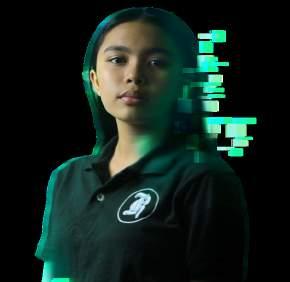
Along with natural disasters, the School Disaster Risk Reduction and Management (SDRRM) implementation encompasses anthropogenic hazards, threats having an element of human intent and negligence, or error that risks students’ welfare and safety. As a preventive effort against human-induced threats within the school vicinity, strengthening school security is imperative.
It is not a secret that the school experiences numerous bomb threats every school year. In addition to this, reports of schoolbased violence in and out of the school continue to grow. Among many other cases, some students discreetly bring dangerous and illegal items punishable under the school guidelines. These alone can intensify the need for heightened security measures to ensure the safety of Del Pilarians.
In line with this, the school works tirelessly in combating these anthropogenic threats one at a time. One of the efforts to combat this dilemma is to increase strict security before entering the school grounds. Through the thorough checking of bag contents and inspection of uniforms, the school ensures that the learners are safe from threats, thereby providing security and peace of mind to everyone involved.
with other groups and individuals to spread the word about ARH. However, the years of the school’s ARH implementation highlight the need for reinforcement and more support. Moreover, Maricar Evia, a registered nurse, Edukasyon sa Pagpapakatao (EsP) teacher, and the school Adolescents Reproductive Health (ARH) coordinator emphasized that ARH is not given due importance in comparison to other school programs and activities.
Hence, to address this issue, the school, along with the student body should exert effort to amplify the implementation of ARH. Collectively, we can make the dream of making reproductive health information and services accessible a reality.
With the rampant sexual issues in society, Adolescent Reproductive Health greatly aids in educating the youth on these issues and the ways to address them. Given the weight of responsibility it has, we should also allow our attention to this program and amplify the actions done to address pressing issues.
REALITY SLAP
Utmost Priority

“
As a preventive effort against humaninduced threats within the school vicinity, strengthening school security is imperative.
Despite its supposed purpose, many people think of the strict imposition of bags and uniform inspection as a tedious waste of time. Some people view it as a restriction of students’ freedom of expression, a stark contrast to the Department of Education Order No. 065 S. 2010, or the General Guidelines on the Opening of Classes which states that wearing school uniforms shall not be mandatory. But against the weight of protecting the learners from possible human threats, this seemingly bothersome mandate proves essential and should not be questioned.
The SDRRM implementation aids in preventing humaninduced hazards, making it one of the bases for strengthening the security in the school. Alongside other initiatives taken to ensure the school’s readiness in times of disasters, the school management can also explain the purpose of the heightened security to the school body, so that we can view this mandate in a better light and collectively help in the pursuit of this cause. Ultimately, the thorough inspection is a reminder that students’ safety is the school’s
Roces
ditor’s mailbox E EDUCATION SECRET ARY
Warmest Regards, Jesua Salamat Senior Editor in Chief The Republic
Cristine Ann Apuntar (12 ABM A)
Yzadora Gabrielle T. Salazar (10 SPJ Olivares)
Princess Ai Gabriel (12 STEM J)
Carmen Ingrid Dumlao (11 HUMSS F)

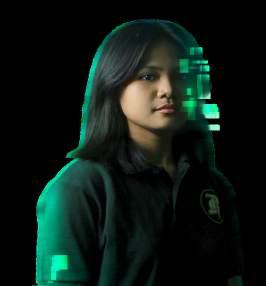


To burn my candles again

When did I stop burning the candles at both ends?
The moment El Niño entered the scene again, it felt like I had no use. My fire withered bit by bit as its warmth firmly embraced our country.
I thought, “They could’ve prepared something in advance,” but I remained silent, afraid of getting my expectations before me, for it’s been so long since our government exceeded them.
I already know that our classrooms are not heat-resistant. Most of the time, during this season, it feels like an oven. Everyone, including me, was like melted candles combined during All Souls’ Day. With insufficient ventilation, I witnessed how air mourns with our lungs, grasping every breath tainted with hefty humidity.
As the flames fueled, back-toback suspension of classes was implemented, but I knew none of that could solve the real cause of the problem. Every day, I am disappointed. Every day, I don’t feel like trying anymore.
Even participating in online classes was so much harder! Who are we fooling? May it be our classroom or our house, both of them are clinging to the same land the heat is stranded on. I ‘hope all’ have air-conditioning at home, I really do.
Going back, I used to spend all my time in school, maximizing every second in fulfilling my academic responsibilities.

Unlike before, the heat is slowly smothering my drive these past few months. Every task seems impossible, every hour feels unbearable!
And with the worsening climate change, they can’t fool me by saying they did not expect something like this to happen. It’s not like this only happened now. In fact, it came to this point because everyone was ignorant. #Karma is real!
Nevertheless, they could’ve done something for us to adapt too but no, it seems like they’re waiting for us to fall ill first.
I wish they realized how easily we could have overcome this. We can contain it by seeding waters behind our clouds, promoting more eco-friendly activities, or even just upgrading the school facilities, literally the bare minimum.
If we think and act more advanced, maybe we can convince
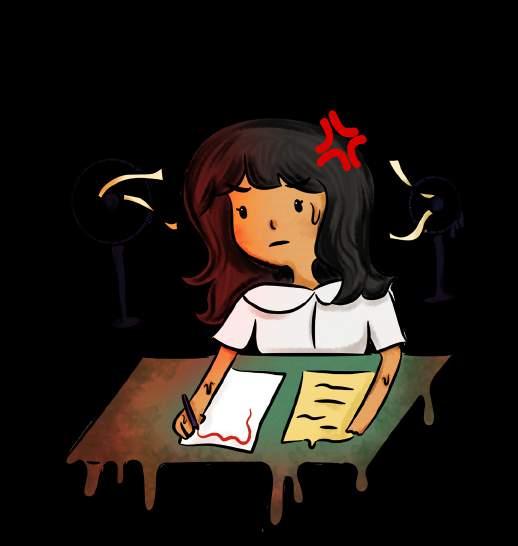


MATATAG Curriculum: Paraphrased Promise

Back then, my mother always promised that studying was “for the best.”Through the years, she taught me that knowledge is the only luxury I can bring down to my grave and the mandatory key to adapt to my reality. Until now, it reckons to me how imperative education is, to the point that the Department of Education (DepEd) will want to reform the system again— almost back to the old, and with the paraphrased promise of the K-12 curriculum, I’m tired of hearing.
As a Senior High School student, I still tease my mom about me not wanting to go to school after a long, tiring day of keeping up with my academic responsibilities. Likewise, I still think that the current curriculum drains the students more than it teaches them, but the thing with the K-12 curriculum, it prepares us for the big college world, the transition from teenhood to an adult one, where the world is even crazier. The premise of K-12 is creating an opportunity for students like me to gain experiences and undergo what we call “immersion.”
Leonor Briones, the former DepEd Secretary, during the transition to K-12, mentioned: “We are doing this to be able to
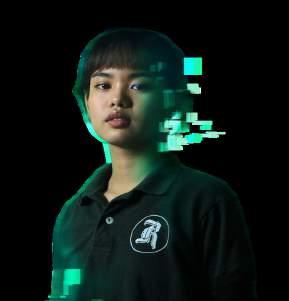
When Enough is Never Enough

As the students and coaches of Marcelo H. del Pilar National High School (MHPNHS) prepare for the Regional Schools Press Conference (RSPC) and the Central Luzon Regional Athletic Association (CLRAA) Meet, they cannot deny the lack of facilities needed for training. If they were given facilities, they barely touch the standards. While some students receive just enough, is it really enough for them to succeed? Would these small efforts of support given by the school and the division be enough to pilot these students to greatness?
As a campus journalist myself, consistently participating in school press conferences, I have witnessed fellow CJs struggling during division and school-lead intensive trainings. Teams from different categories would share printers, laptops would constantly crash, and coaches would spend money from their own pockets to buy whatever they needed for training. Not only is it draining financially, but I also watch our morales go down the drain.
compete in our own country so that we can equip our learners to cope with the changing world.” Strangely, President Ferdinand “Bongbong” Marcos also recalls the promise of the K-10 Matatag Curriculum, it will pave the way for a more progressive future. These lines, along with my mom’s, are like a broken record. It plays on a loop when the quality of education is questioned. Though I sympathize with their intention, not with the way they are repeating things that, for all we know, have not resulted in any noteworthy progress.
Currently, the Philippines ranked 77th out of 81 other countries globally on the Program for International Student Assessment (PISA). Now that the results of the PISA indicate that we’re in a “six-year” lag in learning competencies, I fear that going back and forth will result in a system of failing and wishful thinking.
Therefore, the value of education must be improved with a more patient resolve. Regressing to the curriculum that has evidently failed us will not do wonders. Instead, it is better to invest in filtering out what else can be done and avoided. What we need is to make things work before reforming them into another unfeasible one. Thus, I’ve heard enough of their paraphrased promises; now is the time to see authentic progress.
Without a doubt, coaches of student athletes also experience the same. MHPNHS’s school gymnasium is still ongoing renovation and coaches like mens’ basketball coach Marie Franz Chua have to find other courts to train in.
“If you don’t give us equipment sa pagsasanay, hindi natin makukuha yung tamang result na hinahanap nila sa atin,” swimming coach Joseph Armin Antonio said.
He adds that without a strong support system coming from the school and the division, emotionally and financially, students like me might not have the drive to go on and continue competing and lose their purpose.
Adding to this, Filipinos also suffer from toxic positivity and romanticize resiliency. We hold more value to the results with the little that we have. Coach Antonio stressed that the amount of support and equipment directly reflect the results of training these students, and that the school and division shouldn’t expect much from the students if they’re given less than the bare minimum.
“Kung gusto manalo, kailangan gumawa ng paraan. Sana hindi iyon yung tinitignan para limitado yung support na mabigay sa atin,” he said.
However, knowing that MHPNHS is a public high school, it is understandable that the school would fail to give enough monetary support to students and coaches. The division does give allowance to students competing in different divisions and regions for travel and accomodation, but the point remains the same; it is simply not enough.
Despite this, I hope that the school and the division sees these students’ talents promising and worthy of the boundless support they are yet to give. Giving more than enough to these athletes and campus journalists is an investment as they would surely bring pride and honor to the school and the city.
MASTERMIND
ON YOUR LEFT
HEADS UP
INKS RUN DRY
Chloe Bautista (11 HUMSS F)
Carmen Ingrid Dumlao (11 HUMSS F)
Caitlyn Rose Apuntar (10 SPJ Olivares)
Marion Eliza Yabut (10 SPSTE Banzon)
Chad Jeoffrey Dela Cruz (10 SPJ Olivares)
Edrich Bautista (10 SPFL Beijing)


 Yzabel Louisse Salazar (12 STEM J)
Ryza Angeles (10 SPJ Locsin)
PET GALLERY. A compilation of Delpi fur parents’ photos with their dogs, showcasing tender love and the epitome of having the man’s best friend.
Yzabel Louisse Salazar (12 STEM J)
Ryza Angeles (10 SPJ Locsin)
PET GALLERY. A compilation of Delpi fur parents’ photos with their dogs, showcasing tender love and the epitome of having the man’s best friend.
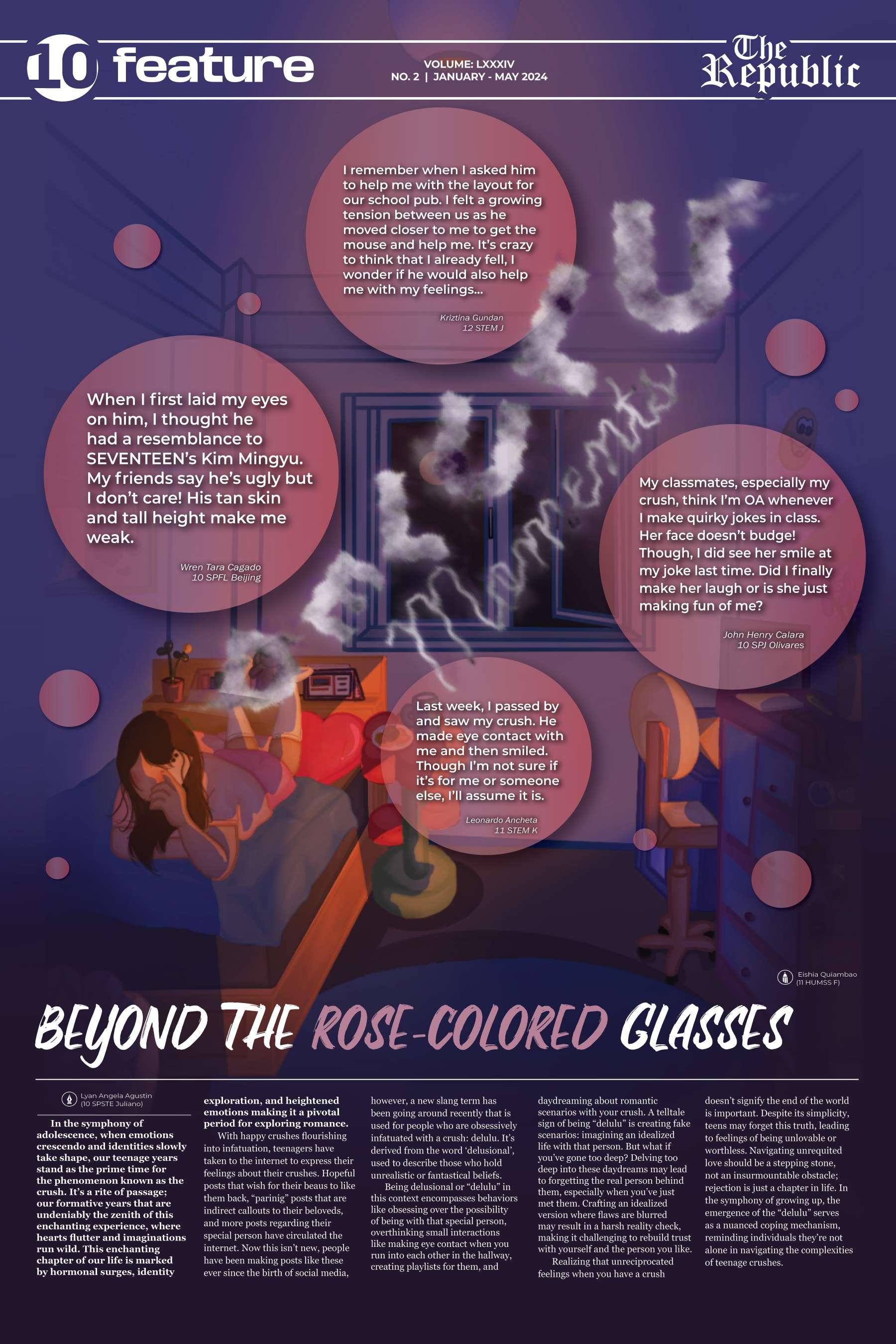

“ Habang may bukid, may pag-asa.

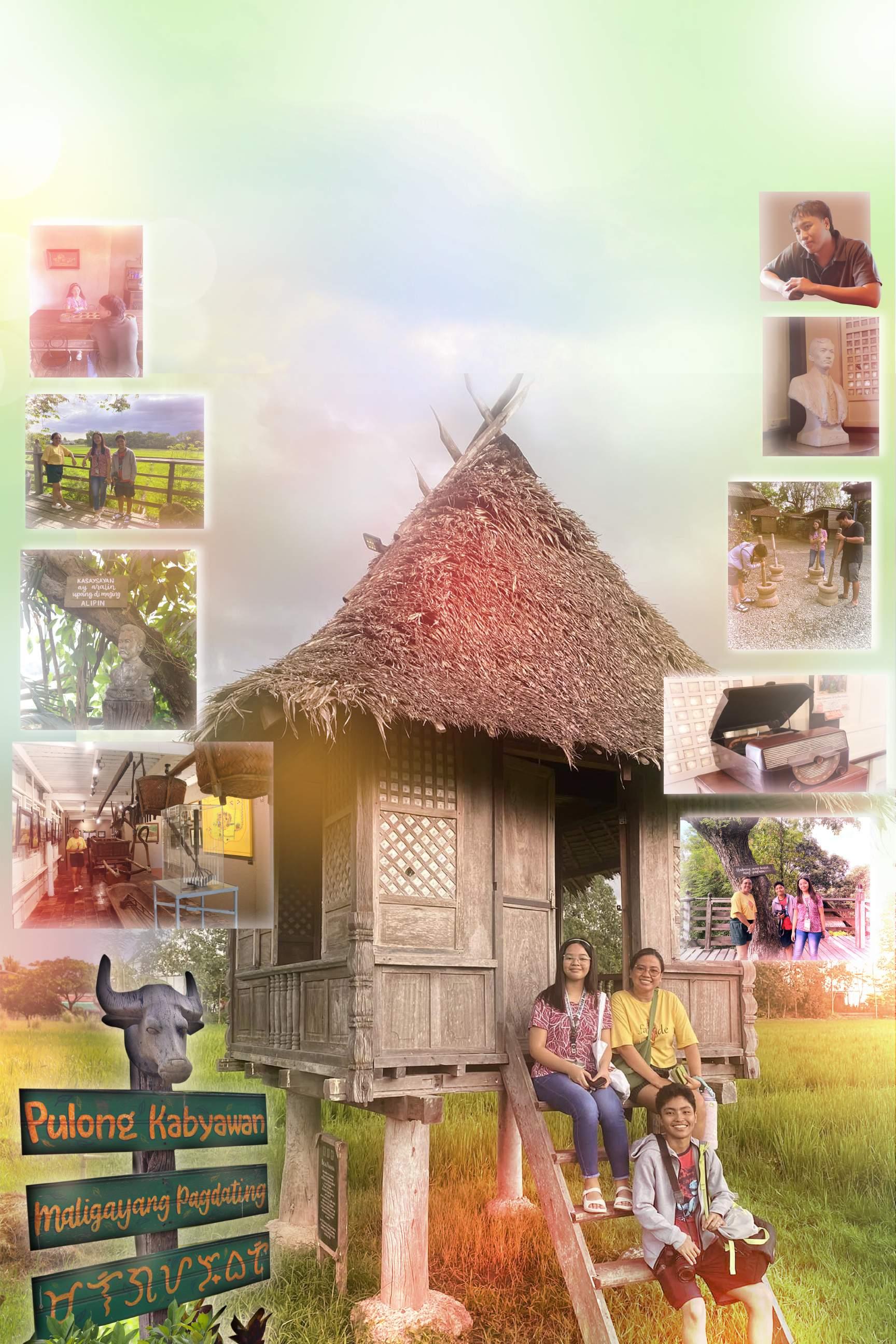
 Shylie Jude De Dios (11 HUMSS F)
TIMELESS SANCTUARY. Pulong Kabyawan’s haven like features, touring Del Pilarians to the fragments of the past. Kyla Lomotan (12 STEM E)
Shylie Jude De Dios (11 HUMSS F)
TIMELESS SANCTUARY. Pulong Kabyawan’s haven like features, touring Del Pilarians to the fragments of the past. Kyla Lomotan (12 STEM E)


Mind the Gap: Bridging the Barrier Between Ability and Access

Do you ever wonder what a world looks like where wheelchairs dance on crowded streets, unhindered by curbs or prejudice? Or even a safe space where fingers fly across braille keypads filled with symphonies of understanding?
An impeccable array, one would say; however, if you would ask me, it is not just a utopian dream but a vision of a future where stigma and disadvantages against persons with disabilities (PWDs) are crippled and replaced by a mosaic of acceptance and celebration.
Based on the World Program of Action, at least 350 million disabled persons are living in areas where they do not receive the services needed to enable them to overcome their limitations.
Added to the foregoing situation is the perception of society, which includes the existing stigma and discrimination alongside a lack of accessibility to public and private services and facilities. Also, based on the budget allocated for Special Education (SPED)
Health is Wealth:
Stepping Stone Towards a Healthy overall well-being

Excellence always comes with a healthy mind and an overall well-being.
Nurturing the knowledge and enhancing the skills alongside prioritizing health serves as the initial step which paves the way through a radiant understanding and an excellent welfare.
Therefore, several initiatives are being implemented within Marcelo H. del Pilar National High School (MHPNHS) toward the health and welfare of the students. This include various
practices driven by a nutrition-wise and a healthier mind namely Medical Missions, LINGAP Center and nutritional initiatives inclined with specified categories.
1. Medical Missions
Hand-in-hand with clubs and alumnis, medical and dental missions are being administered with the goal of maintaining wellness of students and teachers.
2. Lingap Center
More commonly known as guidance, LINGAP Center aims to put end with the stigma

was claimed to be insufficient as its basis is from the number of students. However, with the needed amount of sustainable efforts and understanding, we can foster an environment where ability and accessibility go hand-in-hand.
Ability
It all begins with recognizing the inherent worth and potential of every individual, regardless of their physical or cognitive abilities. A world where every individual can thrive in a symphony of inclusion beyond stereotypes and misconceptions about PWDs.
Access
Building a truly inclusive world requires proactive action. It demands accessible infrastructure and equal opportunities, especially in education and employment. This calls for the amplification of PWD voices in policy-making and decision-making processes, ensuring their needs and perspectives are heard and addressed.
rooting from misconceptions idealized from “Guidance Office.” Thus, it serves as a rehabilitation center that guides and sheds light onto a deeper understanding and provides adequate support for students’ mental health.
3. Nutritional Initiatives (Red, Yellow, Green)
Along with maintaining our overall wellbeing, ou r body intake must also be taken into account. Hence, the school canteen makes it a point that all the served foods are in line with the designated, and specified categories (Red, Yellow, Green) as well as the mandatory checking of nutrition facts. Throughout the school week, healthy foods under green category
are served such as banana cue, green mangoes, and buko juice. However, foods under yellow category are served twice a week while red category stands for foods that are not prohibited. Indeed, there are various ways to ensure that excellence comes along with a healthy well-being. Having this goal in our heart and mind, these initiatives will serve as a stepping stone to enable the saying that health is wealth.
With Dreams
“ His stuggles and difficulties did not hinder him but rather served as an inspiration.
Beyond inspiration, persons with disabilities (PWDs) are not just “inspiring” in spite of their disabilities, but rather individuals with unique strengths, talents, and contributions to society that enrich the soul of human experience.
This defines the radiant glimpse through the life of Marvin Balite, an Edukasyon sa Pagpapakatao (ESP) teacher who is also a scout and Persons with Disability (PWD) coordinator. His journey as a person with disability embarks as an evident proof of life. This includes his struggle as a polio victim at the age of 3 years old, which led him to his difficulty with his studies. One of his experiences is a living shed that people with disabilities in our society are still subjected to social, cultural, and economic disadvantages as he was also a victim of bullying and discrimination.
Beneath the sweeping walls of prejudice built from discrimination and lack of understanding, Balite believed that regardless of his condition, he could withstand and do anything. His struggles and difficulties did not hinder him but rather served as an inspiration. With this drive, he was able to reach the peak of a mountain fueled by his fulfillment where everything seemed possible.
“Masaya ako na kahit mahirap, parang kumikilos akong normal.”
Those were the strangle of words that unlocked his full potential, enriching not just his lives, but the lives of everyone around him. Undeniably, his experience unleashes a trance of a wellspring of talent, creativity, and resilience; a person with dreams.
PWD P
erson
Nina Koleen Cos (10 SPSTE Zara)
Person With Dreams. Sir Marvin Balite, EsP teacher, inspires the school community as he serves as the Coordinator of the PWDs (learners, teaching, and non-teaching personnel) in MHPNHS. Kyla Lomotan (12 STEM E)
WALK THE TALK. Deine Umali, 16, a campus journalist, receives physical classroom assistance due to intermittent mobility disability.
Kyla Lomotan (12 STEM E)
Ana Mariel Avendano (10 SPJ Olivares)
Project C-SMILE Pioneers Offline Evaluation for Excellence

In education, feedback plays a crucial role in driving improvement. However, the process of collecting and analyzing feedback can present challenges.
Dr. Christopher DC. Francisco tackles this issue with Project C-SMILE, a groundbreaking initiative aimed at transforming evaluation at Marcelo H. Del Pilar National High School.

Named Clients’ Satisfaction Measurement (CSM) towards Integral Learning Environment, Project C-SMILE is designed to establish a comprehensive feedback system. Unlike conventional methods, it operates offline, ensuring accessibility for all stakeholders.
Featuring a userfriendly interface tailored to students, parents, NGOs, and other stakeholders, the initiative includes three evaluation tools focused on teachers, non-teaching staff, and administrators, offering a comprehensive assessment of the school’s performance.
MHPNHS implements the offline kiosk-type system to enhance its evaluation processes. By utilizing insights from C-SMILE reports, administrators engage in data-driven policy-making to identify areas of strength and weakness, fostering continuous improvement.
Project C-SMILE reports provide a comprehensive overview of the school environment, empowering decisionmakers to positively influence the entire community. The ultimate goal is to create a fulfilling educational experience for every Delpilarian.
Embodying a dedication to excellence and innovation in education, Project C-SMILE stands as a testament to Dr. Francisco’s leadership and the collaborative efforts of stakeholders, promising transformative change that extends beyond the school and shapes the future of education.


iving in a still developing country, it is crucial to recognize technology as a way not just to entertain, but also to innovate and initiate actions that can benefit the community.
As his ultimate invention in his journey to the Regional Science and Technology Fair (RSTF) 2023 Science Innovation Expo, Romar Almoguez, a Science, Technology, Engineering, and Mathematics (STEM) student, introduced an online recycling application.
KalaCalcu is a user-friendly application available for both Android and iOS devices. It serves as a platform to make recycling more accessible and rewarding for its users.
“Having this application, by incentivizing our residents or the common folks through recycling, encourages them to take action in their homes, on themselves, towards zero waste,” Almoguez says.
For others, its efficiency may be questionable as recycling itself requires physical interaction with the wastes, and
Internet in a Box: bridging education beyond connectivity

n an era where access to knowledge is crucial for advancement, limited connectivity remains a significant challenge hindering education and progress yet, the efforts and visions of a literate community of students from Marcelo H. del Pilar National High School (MHPNHS), Wiki Malolos, exemplify the transformative power of technology in transcending this obstacle toward creating a literate and inclusive community.
Harnessing the innovative power of the Raspberry Pi microcomputer, Delpi students led by Sir Frederick John Macale, adviser of Wiki Malolos, spearhead the Internet-in-a-Box (IIAB) initiative to transform educational access for rural and remote communities that serve as a beacon of hope in bridging the digital divide, providing essential educational resources where internet connectivity is limited.
Developed by the Raspberry Pi Foundation, the IIAB stands at the
people are not that easily convincedto participate in such activity. However, Almoguez took his innovation to a new level and presented a different approach.
The app has the ability to calculate the value of recyclable items that users input based on their types and quantities. As a result, KalaCalcu will provide an estimated amount that users can earn by selling these items.
Moreover, it also acts as a map that will guide the users to the nearest junk shops for easier collection and provides an offline SMS-based feature for transparent communication. This ensures accessibility for users with limited connectivity options, enabling them to seamlessly communicate with the junk shops and arrange a meeting faster.
The development of the KalaCalcu mobile application was inspired by the growing need to address solid waste management challenges in communities. The aspiration for a more sustainable future motivated Almoguez to develop innovative technological solutions that promote waste reduction and recycling.
With that, recycling became rewarding.
forefront of computer technology evolution, democratizing access to computational learning and ensuring inclusivity across diverse expertise levels and backgrounds. It facilitates the sharing of educational websites through a seamless and user-friendly interface.
Thus, this technology also involves a centralized platform or system integrated with the Raspberry Pi microcomputer that allows educators to input or upload educational website links easily. These links are then accessible to students either through a local network within the classroom or remotely via Wi-Fi or another connectivity method.
The system includes features such as user authentication, content management, and possibly collaboration tools to ensure efficient and effective sharing of educational resources. It streamlines the process of accessing and sharing educational content, fostering a more dynamic and engaging learning experience for both educators and students.
Furthermore, by means of unlocking endless learning opportunities, particularly in underserved rural and remote areas lacking wireless connectivity, the students behind this project strive to harness the full potential of the device by tailoring educational content to different grade levels and interests.
This groundbreaking initiative not only addresses the urgent need for accessible learning platforms but also holds the promise of transforming communities. By expanding educational opportunities and empowering students to unlock their full potential, this project stands as a testament to the enduring impact of innovation and determination in overcoming educational gaps beyond connectivity.
Wiki Malolos releases offline internet hotspots
Aiming to make educational materials accessible to the public even without an online connection, Wiki Malolos, a virtual library website produced by Grade 11 Del Pilarians from Humanities and Social Sciences (HUMMS), launches a prototype of Tata Selo’s low cost and offline internet hotspot.
Using an offline connection, this hotspot can provide free and open access to several saved educational websites such as wikimalolos, wikipediaph and agabOPAC and can also connect 10 to 30 people in an offline wifi at a time.
The Tata Selo’s prototype of the hotspot is set to be powered by a raspberry pi computer, an SD card and open source codes which are all placed in a recycled alcohol container that can be bought in less than 1,000 pesos each.
Moreover, these hotspots will be installed first in Marcelo H. del Pilar’s school library, theAklatang Gabriel A. Bernardo and will possibly be available in the city hall and public schools around Malolos City.



REVOLUTIONAZING EDUCATION L I
INNOVATION
CHILDREN OF HISTORY. Wiki Malolos editorial board photo after having a successful launch.
Cyril Eugenio (11 HUMSS F)
Romar Almoguez (12 STEM E)
Jan Lourene Dela Cruz (10 SPSTE Juliano)
Steven Owen Dela Cruz (12 STEM B)
Marcus Nubla (10 SPJ Locsin)
Students blazing the trail to a plastic free future with ecobricks
EPAL: An Initiative to conserve paper in MHPNHS


the earth itself.
food wrappers and sachet packages – the ubiquitous remnants of a consumerist culture. Unfortunately, most of this ends up in landfills where it takes hundreds of years to decompose. This poses a long-term threat to ecosystems, wildlife, and human health.

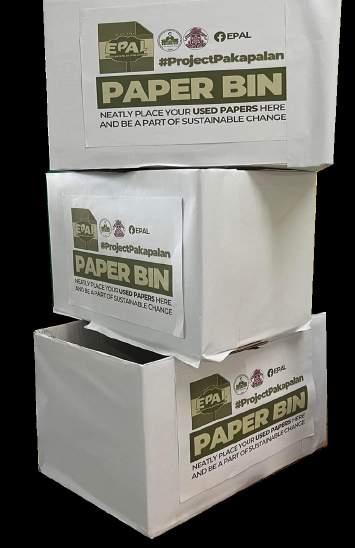

Paper is the silent powerhouse in our everyday lives. From packaging, printing, writing, and other purposes, this convenient, cheap, and easily accessible material finds its purpose in almost every branch of our civilization. As it is healthier and greener compared to materials produced from nonrenewable sources such as petroleum, it is a highly encouraged alternative to plastic. It is decomposable, versatile, and recyclable. Despite its eco-friendly nature, it is important to note that the overconsumption of any material has negative impacts on our environment.
According to Rainforest Action Network, paper production contributes to around 10% of greenhouse gas emissions and is one of the largest consumers of fossil fuels. While it is true that the utilization of paper is greatly reducing the consumption of plastics, it is essential to remember that paper is also a great contributor to the wastes that fill our landfills by 55%, as stated in a study by Parayno and Busmente from Environmental Studies Institute. In the confines of the Philippines, paper accounts for 19% of the MSW or Municipal Solid Waste production.
Sixty-eight million trees are cut down for manufacturing annually; around 60% of waste paper gets recycled, while the rest is discarded and irresponsibly disposed of in landfills. This is where the initiative of Epekto ng Papel sa Ating Lipunan enters with the objective of promoting a greener environment by addressing the impact of paper waste.
In EPAL’s Project Pakapalan, a collection box or “paper bin” is provided in classrooms where students can place their used papers instead of disposing of them. These are then collected every two weeks and delivered to a reputable recycling site. By taking this simple yet meaningful action, students can generate a huge positive impact on our planet, reducing the harmful activities done to our nature and avoiding the deterioration of thousands of ecosystems.
The Ecobricks Bayanihan initiative, in collaboration with the Youth for Environment in Schools Organization (YES-O) and Green Antz Builders, seeks to combat the issue of plastic waste pollution. The project’s core objectives revolve around fostering responsible waste management, recycling, and promoting a circular economy by collecting plastic sachets and exchanging them for school supplies.
Marcelo H. del Pilar National High School, like many schools, deals with a significant amount of waste on a daily basis from
Ecobricks are more than just repurposing of waste. They represent the principles of a circular economy, prioritizing the prolonged use of materials. Engr.
Rommel Benig, CEO of Green Antz Builders, aptly describes ecobricks as a form of “urban mining,” retrieving plastic from the very communities it pollutes rather than
Through active participation in ecobricking, students acquire first-hand experience in waste management and responsible consumption. Annually, the Philippines generates over 2.7 million metric tons of plastic according to the World Bank Organization, a considerable portion of which ends up polluting both land and ocean. Recycling initiatives like this hold the potential to redirect a significant amount of plastic from further harming the environment.
Aside from their environmental benefits, eco bricks are also noted to be five times sturdier
than traditional hollow blocks, as asserted by Filipino engineers. This structural strength makes them a reliable and cost-effective alternative for sustainable construction.
The achievements of Eco Bricks Bayanihan exemplify how students possess the capacity to lead the charge in devising sustainability solutions with the proper support and community engagement.
Given the necessary support and platform, young minds can conceive and execute innovative solutions to intricate environmental predicaments. This approach holds promise in inspiring young individuals across the country to initiate similar environmentally driven projects.



The students behind PROJECT MANTIKA: Oilright! made the decision to act independently due to their growing concerns about the damaging effects that improper oil disposal was having on the environment. Driven by a common goal of changing things for the better, they combined their resources, expertise, and passion to start an advocacy that focuses on an important but frequently disregarded facet of environmental stewardship. The goal of OilRight is to inform students about the harm that improper oil disposal causes to the environment as it highlights the importance of adopting eco-friendly practices in order to shield our planet from the damaging effects of oil pollution. Through their proactive interactions with

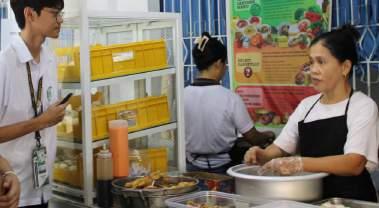
classmates and community members, these students are leading a grassroots movement with the goal of creating a noticeable result. In light of the presence of multiple canteens on our campus, Narahuyo has undertaken a proactive initiative to address the pressing issue of safe oil disposal practices. This decision stems from a profound recognition the
improper disposal of cooking oil poses significant risks to the environment, particularly within the confines of our educational institution. The imperative to safeguard the environment and promote sustainable practices has driven Narahuyo to spearhead an awareness campaign emphasizing the potential repercussions of thoughtless oil disposal.

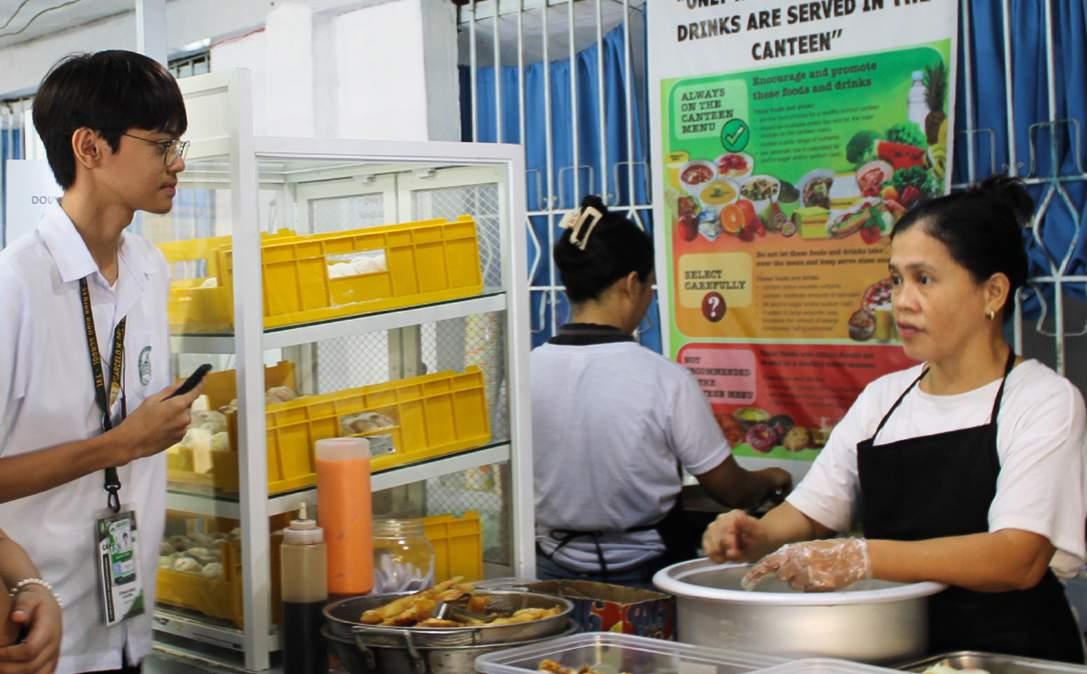
In conclusion, Narahuyo laid out a possible change inside our campus, from just reusing the oil over and over again, to having a different approach to end the reuse of oil multiple times to donating it in exchange for funds. Narahuyo provides a chance for a change for an efficient environment and provides a safe and comfortable environment for the students.
Project Mantika: Nurturing environmental stewardship and fostering change THE OIL-RIGHT WAY. Oilpeeps sharing and fostering environmental sustainability through advocating for proper oil disposal. A step-by-step guide in doing your own EcoBrick TURN YOUR BOTTLE INTO A SPACE-SAVER!
Mikaela Dela Cruz (10 SPSTE Banzon)
Sophia B. Agustin (10 SPSTE Banzon)
Mikaela Dela Cruz (10 SPSTE Banzon)
Georgia Centeno (10 SPSTE Banzon) Johanne Bautista (10 SPSTE Banzon)
Johanne Bautista (10 SPSTE Banzon)
ENVIRO - ADVOCACY
THROUGH THICK AND THIN. Project EPAL provides multiple classrooms with paper bins where students can dispose of their used paper.
Carmen Ingrid Dumlao (11 HUMSS F)
DISSECTING DANGERS: A Call for A Healthier Future

Vape or Electronic cigarettes are a substitute for cigarettes that simulate tobacco smoking. It was once assumed to be a safer alternative to traditional smoking with cigarettes. Thus, it was initially marketed to lessen the number of traditional smokers, and vaping has evolved into a widespread trend among youth, especially students. However, the false marketing of being a “safer alternative” led to people having health risks or worse, death.
One of the key drivers behind the rise of vaping is the belief that it is healthier than traditional tobacco smoking. People also argue that vaping eliminates the harmful combustion byproducts associated with tobacco smoke, thereby reducing the risk of respiratory illnesses and other smoking-related diseases. However, evidence suggests that it is not without any risks. Whilst E-cigarettes may produce a scarce amount of toxicants compared to traditional cigarettes, they still expose the users or the smokers to substances such as heavy metals, volatile organic compounds, and ultrafine particles.
Furthermore, E-cigarette rates increased over the past few years, especially among teens and students, because of their variety of flavors. Teens that are exposed to and addicted to nicotine have also the same effects as ones that are already addicted to nicotine for a long time. Nicotine makes depression and anxiety worse for those who are mentally challenged people. As the brain is still developing, it affects memory, concentration, self-control, and attention
when an adolescent is addicted to nicotine.
The peculiar concern is the alarming rise in vaping among youth populations because of the aggressive marketing tactics by e-cigarette companies, coupled with appealing flavors and sleek designs, have contributed to the normalization of vaping among adolescents. Withal, the accessibility of e-cigarette products, whether it is online or in retail stores, further increased the trend, with adolescents experimenting with e-cigarettes without fully grasping the potential risks.
Moreover, a school campaign advocacy, Healthy Individuals Promoting Anti-Smoking Campaign (HIPAC), led by Grade 10 Del Pilarians aims to promote a society where smoking and vaping are harmful and frowned upon. As smoking E-cigarettes is extremely dangerous, this campaign advocacy works towards achieving a noticeable decrease in the number of students that engage in smoking activities to create a more safe and tobaccofree campus.
In conclusion, E-cigarettes cause many health-related problems in our bodies, mainly lung and cardiovascular diseases. Among youth, this also interferes with their brain development and understanding. As HIPAC’s goal is to encourage the students to take leadership roles in spreading the anti-smoking and anti-vaping message among their peers and classmates, this may be the start of creating a healthier and secure environment for them, eliminating the bubble of the sham “safe alternative.”
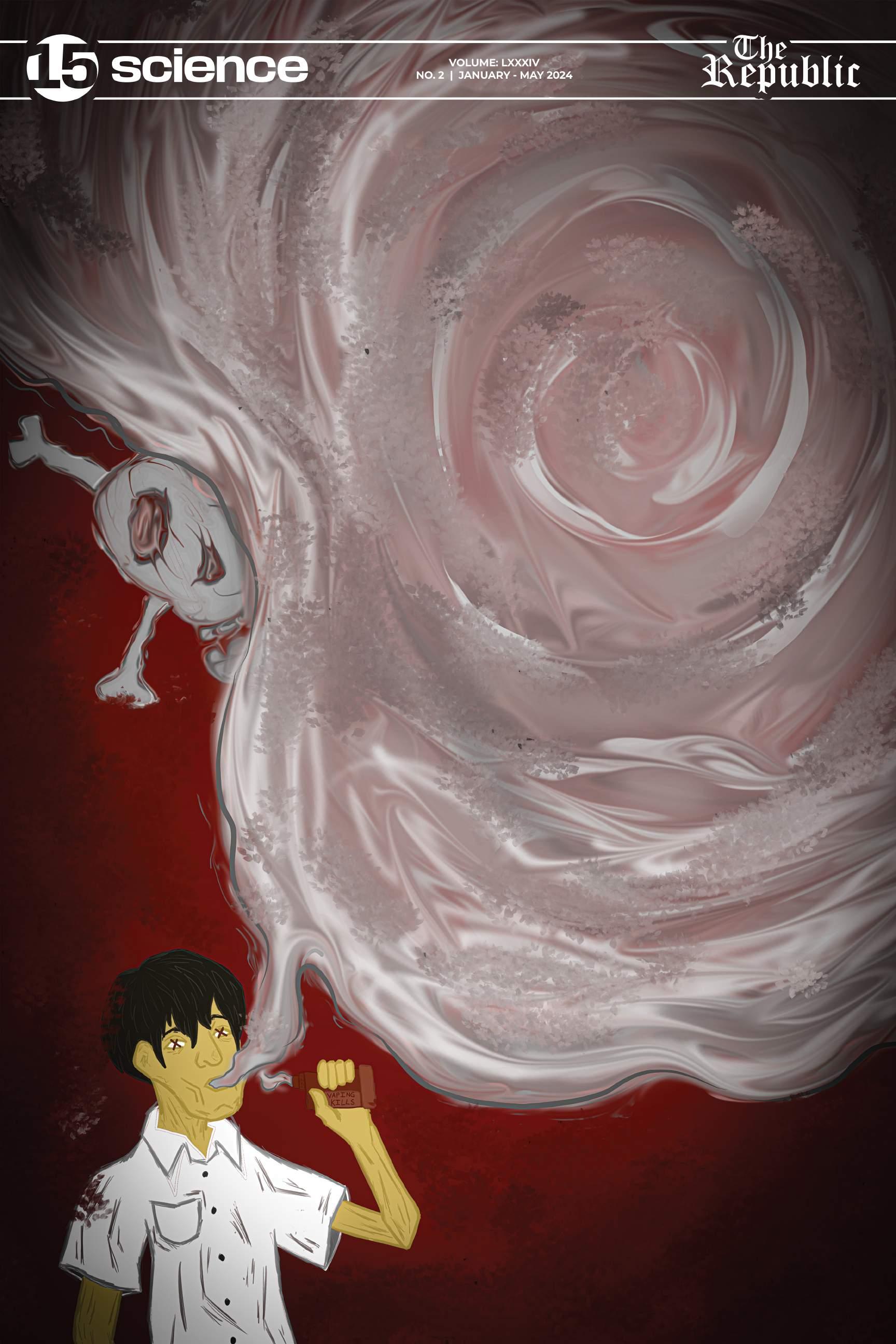

HEALTH
Luis Miguel Antonio (9 SPJ Roces)
Mikaela Dela Cruz (10 SPSTE Banzon)



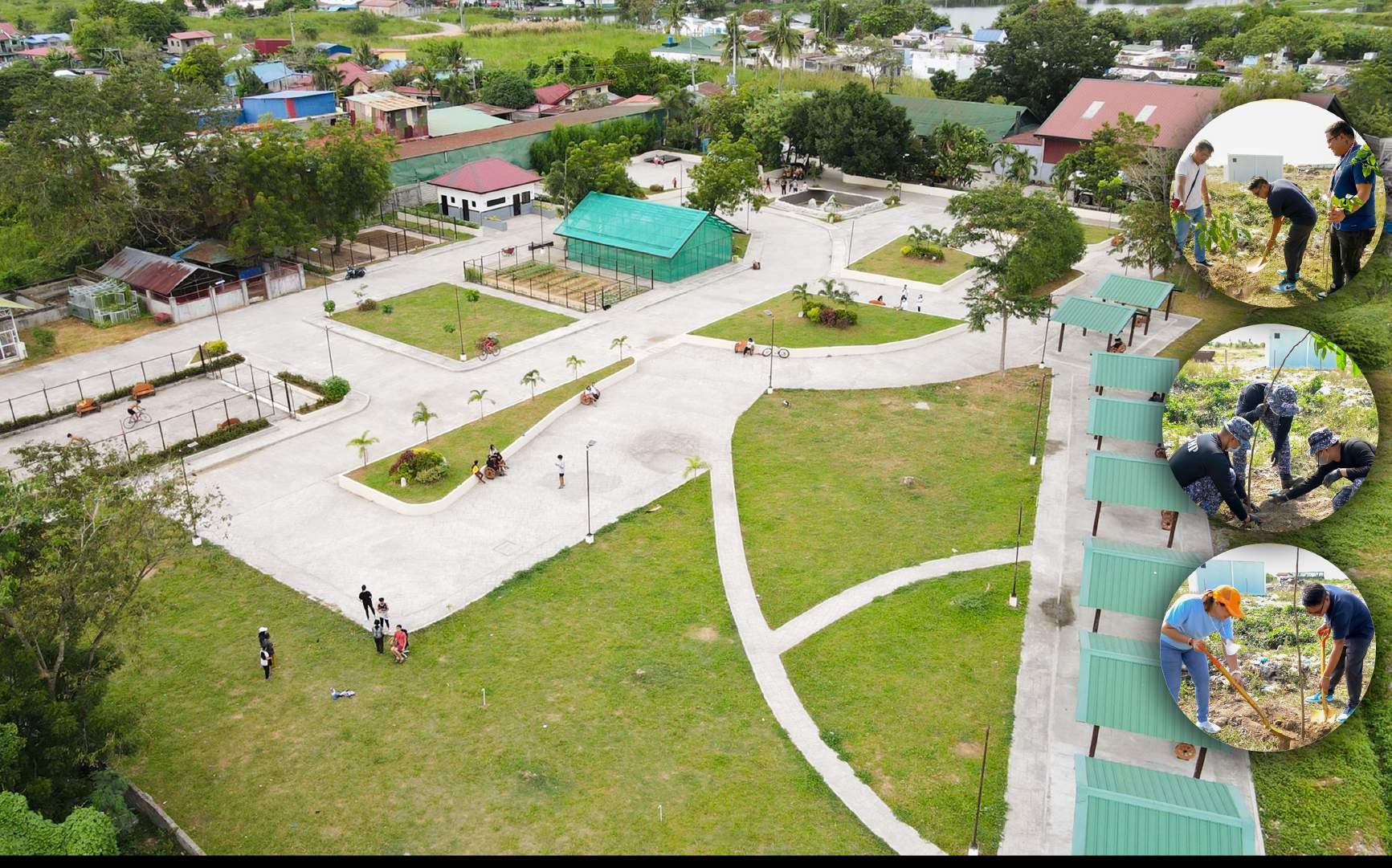
A VIRIDESCENT HOPE: Eco-Parks in Malolos bear opportunities for a greener city

“Lungs of the city”. These were the words that CENRO Malolos OIC Amiel Cruz used to describe what an eco-park is in an interview. An eco-park is a space dedicated to restoring and conserving a sustainable nature. The City of Malolos is steadfast on its journey of urbanization, and has brought with it the preservation of nature.
Matimbo, one of the fiftyone barangays in the city, holds one of the eco-parks the local government has built. Within the 7-hectare Materials Recovery Facility is a 10,000 square metre eco-park featuring several greenhouses, open areas, and countless plants and trees, all for the welfare of the city’s residents. This project started on 2021 and was established last December and worked on a budget of ₱ 16 million.
The eco-park shows the serene mix of recreation and environmental conscience. Designed to promote wellbeing and sustainable living,
it provides a haven for recreational activities that are inseparably connected to the natural environment. Cruz added, “Exercise, jogging, ang kapaligiran kasi, connected sa kalusugan yan.” Translated, this highlights the link between the health of the environment and a healthy lifestyle. The ecopark is a great setting for exercise enthusiasts, providing a beautiful backdrop for activities that promote not just physical fitness but also environmental awareness and preservation.
Other than recreational purposes, CENRO and the nutrition office assign planting spaces for priority citizens of Malolos. Currently, the spaces are allocated to solo parents for planting vegetative and fruitbearing plants. According to Cruz, they are on the second cycle of planting as they have just recently reaped what they have sown.
Cruz was questioned about the CENRO’s stance on collaborating with students. In response, he enthusiastically conveyed CENRO’s openness
“
Sa totoo lang, students ang gusto kong ka-collab dahil gusto kong i-instill, at their young age, ang kahalagahan ng nature, kung papaano pangangalagaan ang kalikasan.
to such collaborations, emphasizing their eagerness to engage with students. Cruz employed a metaphorical expression, noting that they view collaboration with students as an opportunity to embrace new perspectives, stating, “You can’t teach old dogs new tricks.”. He went on to articulate that CENRO sees tremendous value in working with young minds, the torchbearers of the future. The organization is committed to fostering an environment where students can actively contribute to initiatives that promote environmental consciousness.
CENRO also plans for the Matimbo Eco-Park to be solar powered to help mitigate climate change. Generating electricity using solar energy produces no greenhouse gas emission, a factor in climate change. Solar lights for the park are underway. Quarterly tree plantings are also done inside and outside Matimbo’s eco-park.
The Matimbo Eco-Park is not just the one in Malolos. There
is also the Republika Park – a solar powered park placed in front of the new city hall. And just last January 24, the plans for an eco-park in Barangay Bulihan has finally started.
Matimbo MRF collects recyclables such as plastics, which can only be collected by authorized and official partners. It is, as well, open for educational use as Cruz cited a recent partnership with student researchers who developed a system that converts old oil into fuel that farmers may utilize in their tractors.
With the City of Malolos undeniably being one of the leading cities in development, the eco-parks built in its territory is a vital step in uniting the environment with the challenges of time and human inhabitancy. The Matimbo Eco-Park alone combines preservation and humane advocacies by opening its gates to solo parents’ welfare and student collaborations, certainly branching a door to a verdant hope.
AMIEL CRUZ Cenro Malolos OIC
VERDANT SANCTUARY. Nestled within the serene landscape, the Matimbo Eco-park offers within the Malolos MRF. This eco-friendly haven provides a sustainable retreat for nature enthusiasts and locals.
Cenro Malolos
Kurt Lopez (12 STEM A)
DEFYING HURDLES

MHPNHS ATHLETES DOMINATE CITY MEET AMID LACK OF TRAINING FACILITIES DUE TO RENOVATION

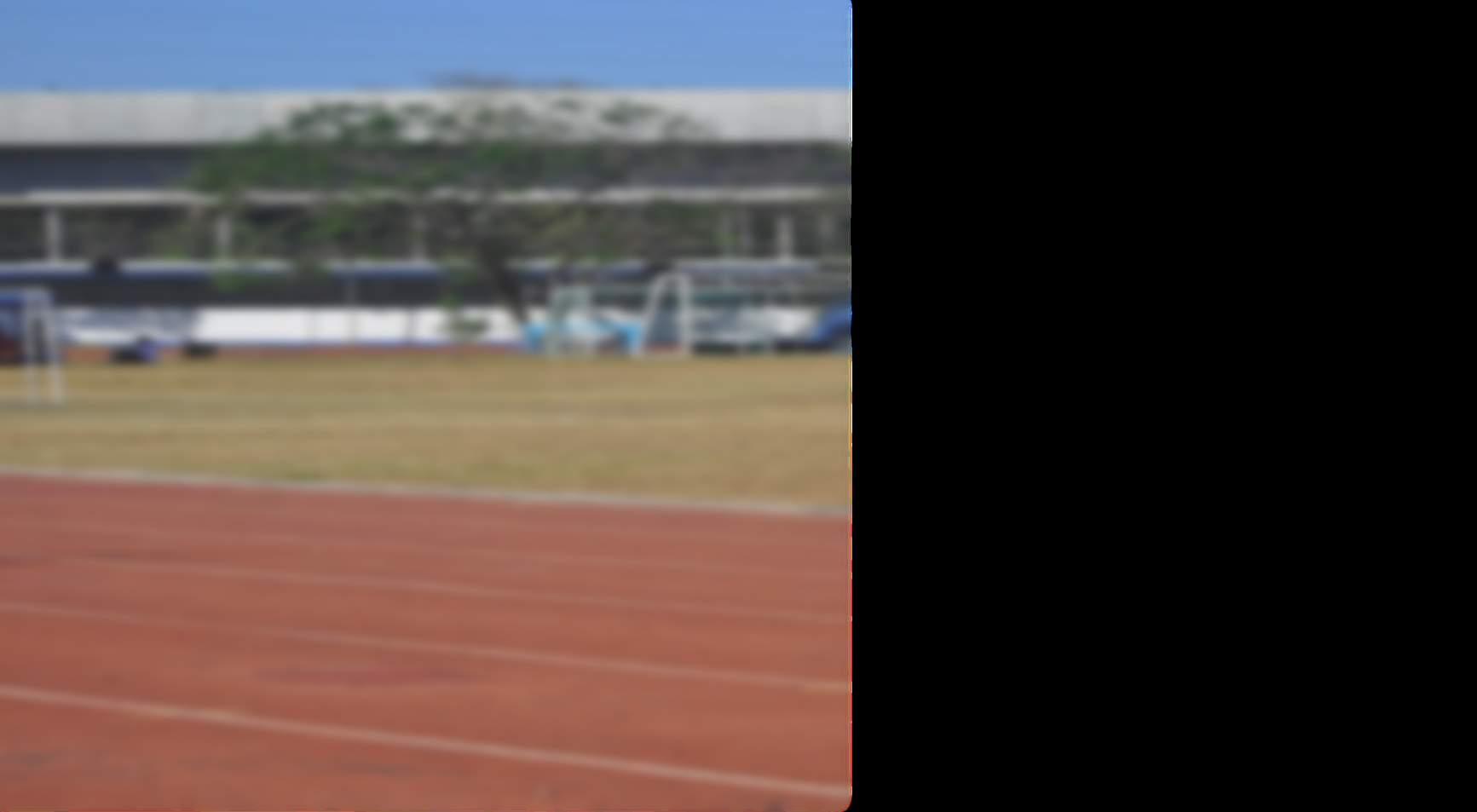
AQUATIC EXCELLENCE
SURPASSING WAVES: DELPI SWIMMERS CONQUER CITY ATHLETIC MEET 2024


Last February 26, the Malolos City Athletic Meet 2024 commenced at the Bulacan Sports Complex. Following the event’s opening day, Swimming started the next two days, February 27-28, in which Del Pilarians showed impeccable strokes of triumph, winning a total of 31 gold, 27 silver, and 12 bronze medals, respectively.
There were 72 events overall, 42 of which were for the secondary level. Following a warm-up, a briefing, and the introduction of the tournament managers, referees, and other notable individuals, the competition began, showcasing the 72 events throughout two days. 56 events were completed on the first day and the remaining 16 were carried out on the second day.
Some events were merged to
accelerate the contest and save time, such as Events 70 and 72, which were the 4X100 Meter Freestyle Relay for
of the competitions na nagbibigay talaga sa’kin ng confidence in my swimming journey,” emphasizing the
MIGHTY DRAGONS MAUL CMIS CAGERS, CLAIM CITY MEET GOLD

M HPNHS Basketball Men’s Team sustained the early momentum they got after a strong start as they blew up CMIS Sto. Rosario, 91-64, in the championship game to pocket the gold in the 2024 City Athletic Meet at the Bulacan Sports Complex last February 26-28. Out of 10 teams that participated in the event to represent their districts, the Mighty Dragons, led by Jaycee Buguis and Hanzey Ulyssis Sahagun, came out smoking to swept the path in retaining the title by defeating four secondary teams of BMIS, CMIS-Atlag, Pamarawan School, and LCUP. Despite the challenge brought by the hot weather, Del Pilarians still managed to outsource CMIS-Sto. Rosario in
the final match, churning out a big 19-point lead to keep their title bid at bat throughout the first quarter, 41-22. Both 1st and 2nd quarters of the championship were taken over by the Del Pilarians by scoring consecutively, resulting in an early momentum in the match using Mercado’s play-making, allowing him to dominate the inside court and ending the 2nd Quarter with a 14 lead, 52-38. Meanwhile, the 3rd Quarter kicked off still in favor of the Mighty Dragons, draining the momentum of Rosarians after Mercado and Sahagun managed to slip their way to the former’s defense. As a result, it allowed them to launch consecutive lay-ups with treys, ending the quarter with 68-50. Having a tight defense and
passive offense, the team had successfully bagged the trophy as they completely overwhelmed the Rosarians with a 91-64 score, finishing the game with the crown being retained to the Del Pilarian Men’s Basketball Team.
This game was opened after Mighty Dragons had a tight match with LCUP in the semi-finals resulting in an overtime that hyped the audience as they claimed the 87-91 ending the overtime in favor of Del Pilarians.
The loud and nonstop cheers of the audience from the bleachers strengthen their fighting spirits to beat CMISSto. Rosario for a ticket to qualify in the Central Luzon Regional Athletic Association (CLRAA) Meet 2024.



M
Johann Caceres (11 HUMSS F)
Johann Caceres (11 HUMSS F)
Light Reyes (01SPJ Locsin)
VICTORIOUS. Delpi Athletes Euwan Manalad (Left Side) and Carl Salonga (Right Side) smile for victory after withstanding the hurdles of City Meet Athletic 2024. Ianne Dalupang (9 SPJ Ople) Yzza Dela Cruz (10 SPJ Olivares)
ON TOP. Teejay Mendoza, together with his basketball men’s team, the Mighty Dragons, saves the day as they win over the CMIS Caters in the City Meet 2024.
Jervie San Jose (10 SPJ Locsin)
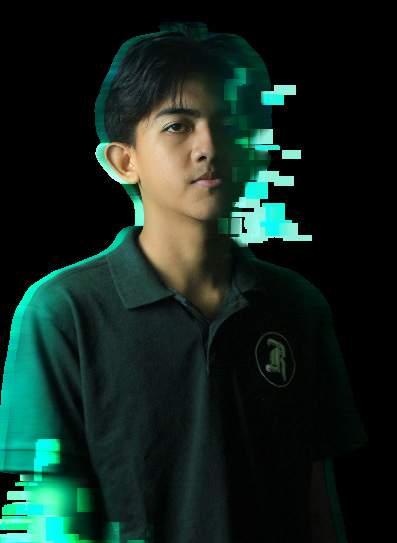
Beyond the scoreboard

The roar of the crowd was deafening, a constant thrumming in their ears. However, it wasn’t the cheers and chants; it was a ground filled with spotlight beams sliced through the darkness, pinning them under an intense gaze. This was the life of a star athlete, a seemingly glamorous existence that belied the immense pressure to perform.
Despite being widely recognized around the school for the sports they play, studentathletes are often held to a higher standard and an immense pressure to perform well academically. In this scenario, the perspective of a sports coach lies in despair, “Nakakasakit ng damdamin,” Franz Chua, a Special Program in Sports teacher, says in disbelief.
Thus, she also emphasized how the struggle of a studentathlete behind every low grade they received was far from the grueling practice schedules and travel commitments, they had to endure as it leaves them little time to study.
DELPI ATHLETES SWEEP WREATHS OF VICTORY IN CITY MEET 2024


This sends a clear message, a system that thrives on their athletic prowess to an uncertain future after the final whistle blew. However, these struggles serve as a challenge, a drive towards the beacon of their game. Several ways and guides must be acknowledged to keep track of the balance between their dream and academics.
Get Everything Documented. Take track of how you balance your time, including a schedule that includes dedicated time for both academics and sports alongside prioritizing tasks accordingly.
Avoid procrastination. Start working on tasks early, rather than waiting until the last minute. This will give you more time to ask for help if you need it.
Method of Support System. Talk to your friends, family, or other trusted adults about the challenges you’re facing.
They can offer encouragement and advice. Also, Let your coaches and teachers know about your commitments to both academics and sports. They may be able to work with you to adjust deadlines or schedules if needed.
Ensure a better well-being. Take breaks: Schedule time for relaxation and activities that you enjoy. This will help you avoid burnout.
By taking these steps, you may find a balance that works well for you, as there is no one-size-fits-all approach.


Being home to the champions bears a recurring pressure on its athletes, however, despite all the rigid training and hurdles they met along the competition, Del Pilarians remained triumphant as they bagged 171 Gold, 51 Silver, and 24 Bronze medals at the City Athletic Meet last February 26 - 28.
Achieving such a feat is not fulfilling enough without facing problems during the preparation. According to Ma’am Mary Franz Chua, the men’s basketball team, Mighty Dragons’ coach, their training for this year’s competition is harder as the school gymnasium is under renovation.
“Lahat ng bola namin kalbo na. Wala na kaming nagagamit ng maayos,” she added, proving that the path to victory is not as smooth as it seems as they lack sufficient equipment to train effectively.
In addition, the scorching Sun’s presence during their intensive training pushed the

Automated Sportscasting

especially the basketball team who were crowned champions three times in a row since the pandemic.
“Pag gusto nila ‘yung ginagawa nila, hindi sila mapapagod,” Chua assured, sharing the how the players value their work, enough not to let tiredness to overpower them.
Along the basketball team, all players of Marcelo H. del Pilar National High School (MHPHS) are determined as Sir Joseph Armin Antonio, a swimming trainer, shared that their real goal is entering the Palarong Pambansa 2024, treating the division and the approaching regional levels as their warm-up.
Furthermore, Sir Antonio mentioned one important factor that kept them different from all the competitive players around the city, “Develop work ethics and most especially your attitude when doing it.”
To train is to corporate your physical efforts with discipline. This reveals how training alone is not enough to be deserving of all these grand medals honored to the
“
The development of technology brings along the emergence of Artificial Intelligence (AI). With its ever-evolving features and
these bounteous wreaths of
is only the start of their
As they move forward, their

functions, will it replace the traditional journalism in Courtside?
GMA Network launched AI Sportscasters in September 2023 as a digital initiative for the opening of the National Collegiate Athletic Association (NCAA) Season 99. Since its release, it has continued to draw flak in the online community.
Generated using Image Generation, Text-to-speech AI, Deep Learning Technology, etc., the launch of AI sportscasters is deemed by many as tone-deaf and an insult to dwindling interest in traditional sports journalism.
Even though the network clarified that their seasoned broadcasters are irreplaceable,
and
the issue lies within the seemingly covert attempt to supersede human journalists.
The negative reception of the general public just goes to show that AI Sportscasting poses great risks in sports news presentation and journalism in general.
While an AI sportscaster can present news as factual as a human sports correspondent, they cannot capture the true essence of sports, let alone the enthusiasm and the heart of full-fledged sports journalism put in every report.
In the gradual decline of interest in traditional Sports newscasting in the Philippines, let us stand firm to rekindle the fire in traditional sports and protect the sanctity of journalism.
Clinching
victory
journey.
honed skills
formidable determination will show off to the upcoming Central Luzon Regional Athletic Association (CLRAA) to be held in the province of Tarlac this April 27 to May 3.
The negative reception of the general public just goes to show that AI Sportscasting poses great risks in sports news presentation and journalism in general.
Del Pilarians’ Overall City Meet wins 171 51 24
Johann Caceres (11 HUMSS F)
Karl Kevin Buenaventura (11 STEM E)
Nicolette Rain Timoteo (10 SPJ Olivares)
THREE FEATS AND COUNTING. MHPNHS’ Mighty Dragons after-game City Meet celebration photo, eyeing to defend their legacy of being the consecutive defending champions at the approaching regional level.
Anika Cruz (10 SPSTE Juliano)
MALOLENYO NAK MUAY JOLTS SILVER IN NATIONAL JAUNT

A 12-year-old student from Marcelo H. Del Pilar National High School advanced and managed to pull the strings in the 2023 National Muay Youth Games last November 13- in the Philippine Sports Arena in Pasig.
Yran D. Nabong from 7 Soliven of Special Program in Journalism went all out, securing the silver medal in the national stint.
Along with Malolos City, over a hundred cities across the Philippines competed in the said tournament. Despite the huge number of contenders, Nabong managed to seize the 2nd place after falling into the hands of Tristan Lopez of Benguet in the semi-finals.
The Del Pilarian nak muay came far in entering the national level by bringing home the silver and falling short of the gold. Following his win in the Regionals last June due to their extensive preparation, it became a core that assured his performance that led him on to the nationals
Although Nabong’s training was quite challenging, he was positive that his studies would not be affected.
“Sa ensayo naman po, yung time management sa studies and training ay mahalaga po, kapag walang pasok ay mag-trtraining po tapos kapag walang ensayo babawi naman po ako sa pagaaral,” the silver medalist stated.
The prodigy rekindled a small rivalry with Lopez after seeing him again in the Youth Games after kneeling from the crowned champion in the Regionals; they also squared off for the regional championship.
“Sa contest po yung sa pag cut ng weight kasi sa timbang po need mameet yung exact weight, if ‘di po mameet, possible na ma-disqualified and masayang lang po ung pinaghandaan and pinaghirapan para sa laban.“
Through his journey commencing early this year, his discipline and resilience were fused with his talent, repaying all of his dedication with a hardearned silver medal.

FROM THE STARS
NLEX Road Warriors’ DOMINICK FAJARDO From school courts to national arenas

“Hindi lang siya basta laro para sakin, parang siya na mismo yung naging game-changer ng buhay ko.”
Dominick Fajardo made it all possible by embedding his name into the courts of Marcelo.
Spending his high school life at Marcelo H. Del Pilar National High School (MHPNHS), where he initially focused more on studying to achieve his goal of helping his family in the future, Fajardo stumbled over an unexpected love for Basketball.
Back then, he saw the sport as a fleeting distraction rather than a catalyst for reaching his dreams. It wasn’t until the third year that fate acted upon him and redirected him to be part of the annual Intramurals in 2009.
Fajardo, gradually growing a passion for basketball, reluctantly participated in games and made outstanding performances. After being offered a spot on Marcelo’s team, he respectfully declined it for the reason of having more time to himself.
“Nung time kasi na yun, mas gusto ko pa na pumasok lang at umuwi sa bahay at wala nang gagawin,” he explained.
In his final year, the rookie star player
gave in as Coach Basil Caluag convinced him to join his basketball team, believing his talent could bring the school to regionals. His court debut at the Malolos City Athletic Meet in the same year led to the team dominating the event and being crowned champions.
The march to the Central Luzon Regional Athletic Association (CLRAA) Meet marked a significant turning point in his life, as he became a titan under MHPNHS and represented the school as representatives for the regionals, marking the beginning of his greatness. “Yung pagqualify namin for CLRAA, yun siguro yung pinaka-highlight ng career ko kasi dun nagsimula lahat.”
He, later on, finished his education and got a job, but he did not forget his dreams of playing basketball, even in leagues outside of Malolos. One of them was called the PBA Olympics, where he was told by officials that he could play basketball on a higher level.
The former Del Pilarian was chosen to be a part of the next PBA 3x3, where the coaches of NLEX were scouting for potential players. The said franchise was satisfied with the 30-year-old’s performance, and he was included in the roster for the PBA On Tour. Following that, Dominick was drafted last year, September 17, in the PBA draft, where he was selected



 SHOOTING
Light Jiezl Reyes (10 SPJ Locsin)
Johann Caceres (11 HUMSS F)
HIGHFLIER. Dominick Fajardo, a Del Pilarian alumnus, soaring from school to national court, NLEX Road Warriors. Dominick Fajardo
HIGH HOPES. Delpi nak muay Yran Nabong shows off his high kicks while training for the 2023 National Muay Youth Games.
Kyla Lomotan (12 STEM E)
SHOOTING
Light Jiezl Reyes (10 SPJ Locsin)
Johann Caceres (11 HUMSS F)
HIGHFLIER. Dominick Fajardo, a Del Pilarian alumnus, soaring from school to national court, NLEX Road Warriors. Dominick Fajardo
HIGH HOPES. Delpi nak muay Yran Nabong shows off his high kicks while training for the 2023 National Muay Youth Games.
Kyla Lomotan (12 STEM E)




 LOCKED IN. Tata Celo Spiker sets the MHPNHS Volleyball Secondary Boys team for success, clutching a ticket to the 2024 CLRAA Meet.
Dominic Pascual (10 SPSTE Santos)
LOCKED IN. Tata Celo Spiker sets the MHPNHS Volleyball Secondary Boys team for success, clutching a ticket to the 2024 CLRAA Meet.
Dominic Pascual (10 SPSTE Santos)































































 SHOOTING
Light Jiezl Reyes (10 SPJ Locsin)
Johann Caceres (11 HUMSS F)
HIGHFLIER. Dominick Fajardo, a Del Pilarian alumnus, soaring from school to national court, NLEX Road Warriors. Dominick Fajardo
HIGH HOPES. Delpi nak muay Yran Nabong shows off his high kicks while training for the 2023 National Muay Youth Games.
Kyla Lomotan (12 STEM E)
SHOOTING
Light Jiezl Reyes (10 SPJ Locsin)
Johann Caceres (11 HUMSS F)
HIGHFLIER. Dominick Fajardo, a Del Pilarian alumnus, soaring from school to national court, NLEX Road Warriors. Dominick Fajardo
HIGH HOPES. Delpi nak muay Yran Nabong shows off his high kicks while training for the 2023 National Muay Youth Games.
Kyla Lomotan (12 STEM E)


 LOCKED IN. Tata Celo Spiker sets the MHPNHS Volleyball Secondary Boys team for success, clutching a ticket to the 2024 CLRAA Meet.
Dominic Pascual (10 SPSTE Santos)
LOCKED IN. Tata Celo Spiker sets the MHPNHS Volleyball Secondary Boys team for success, clutching a ticket to the 2024 CLRAA Meet.
Dominic Pascual (10 SPSTE Santos)